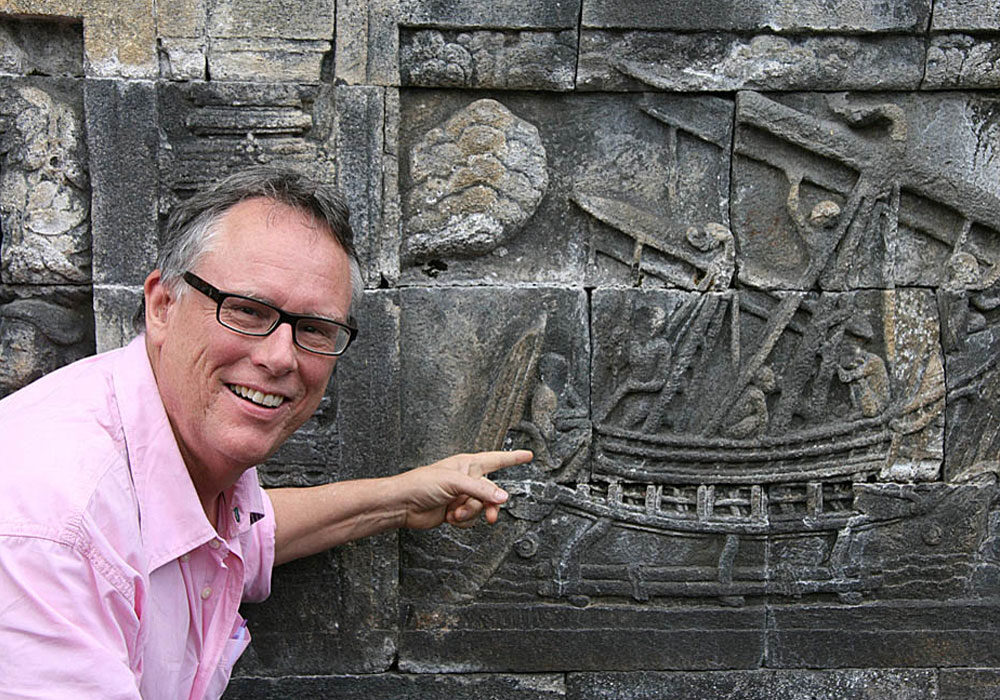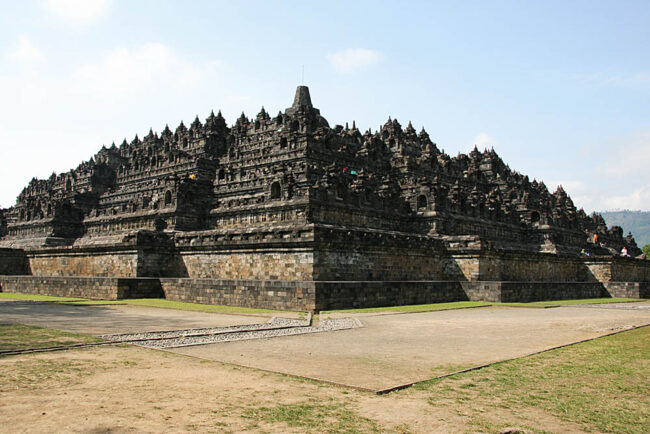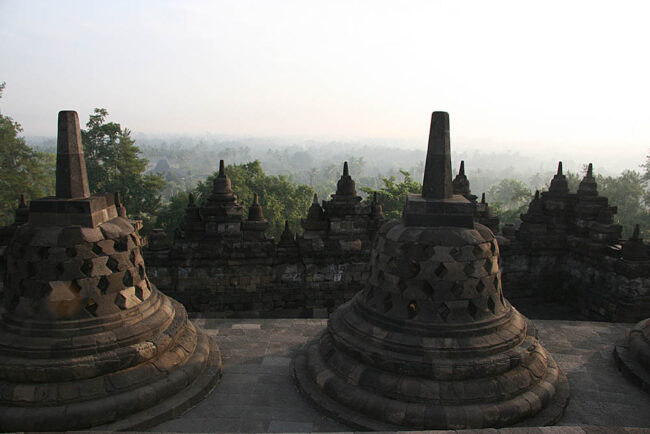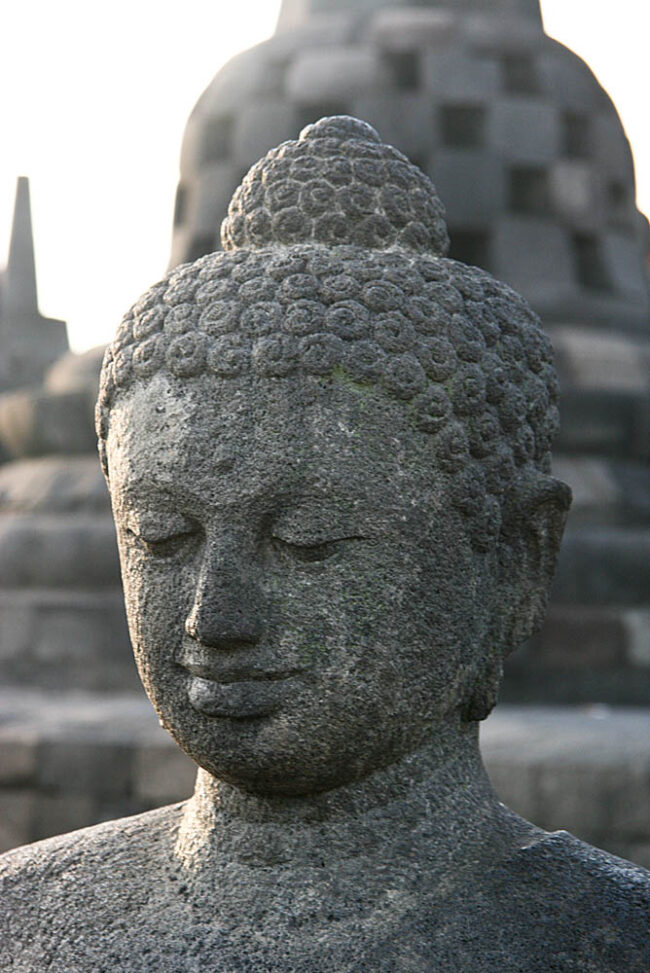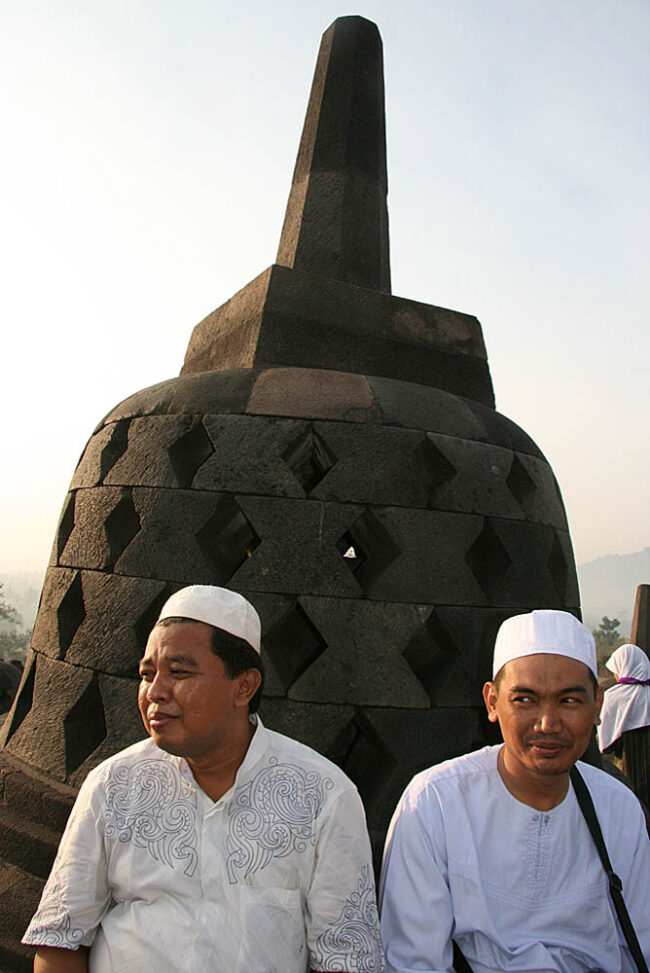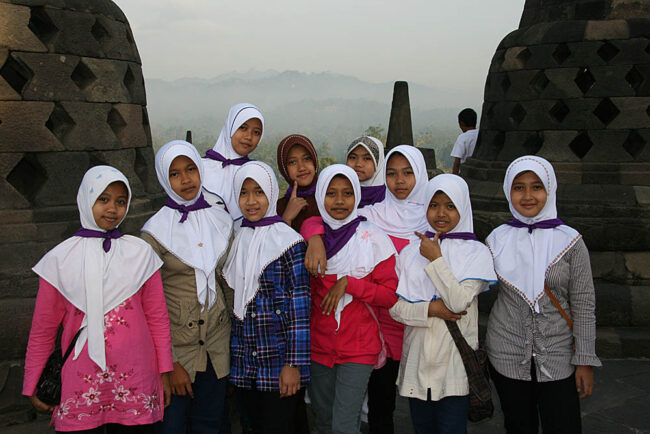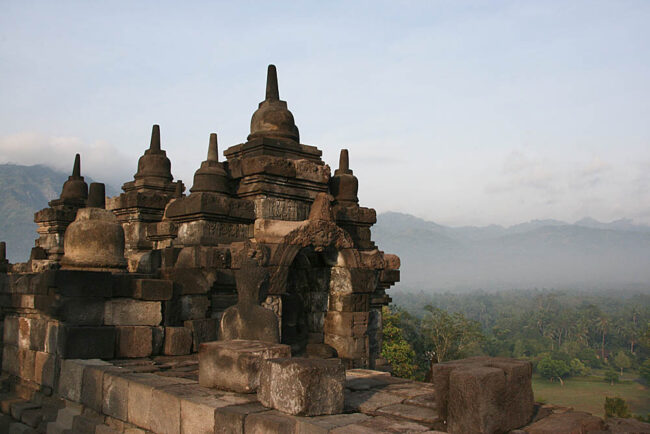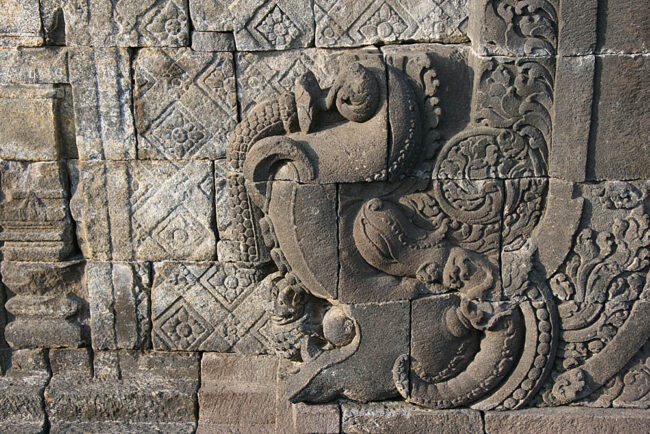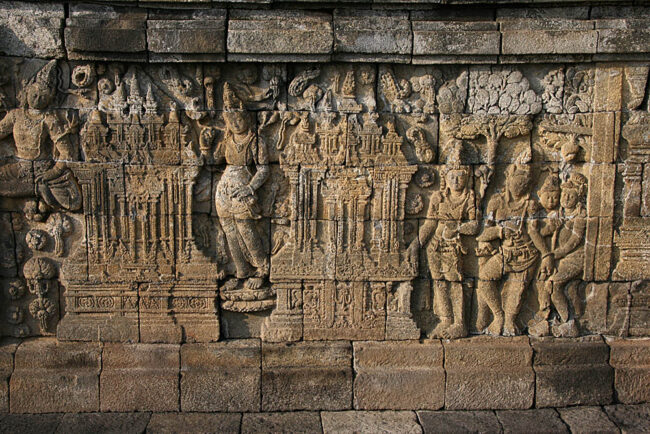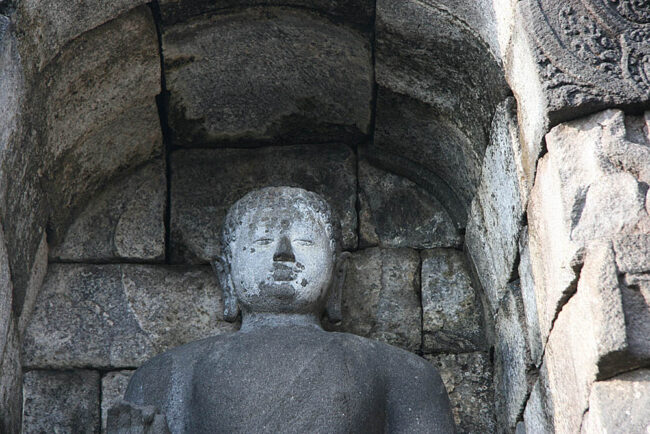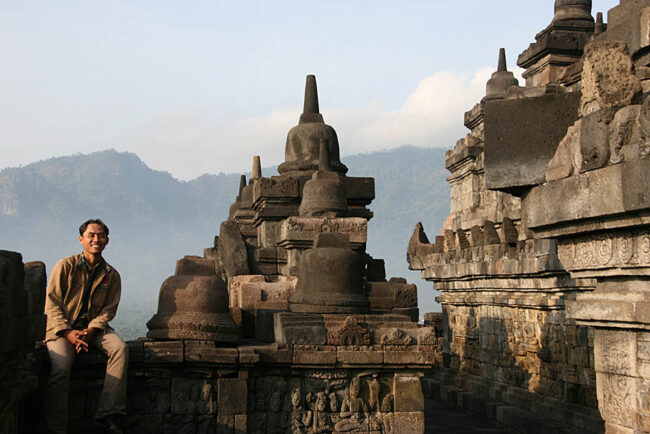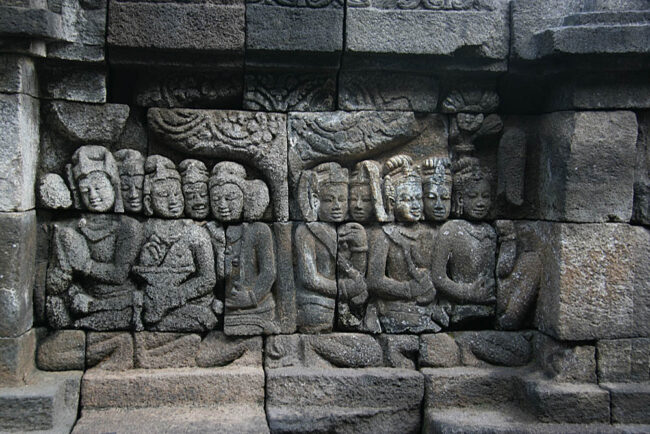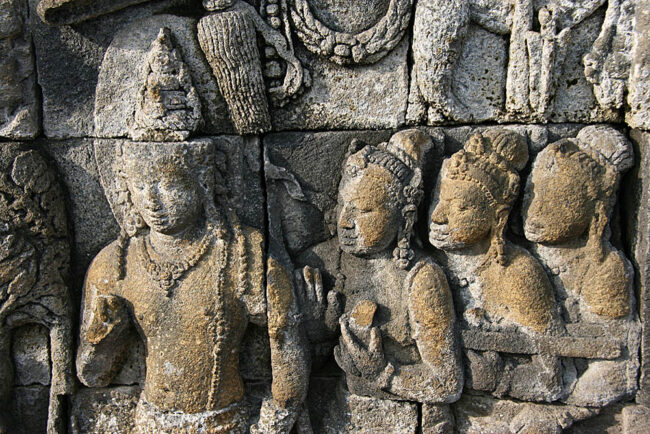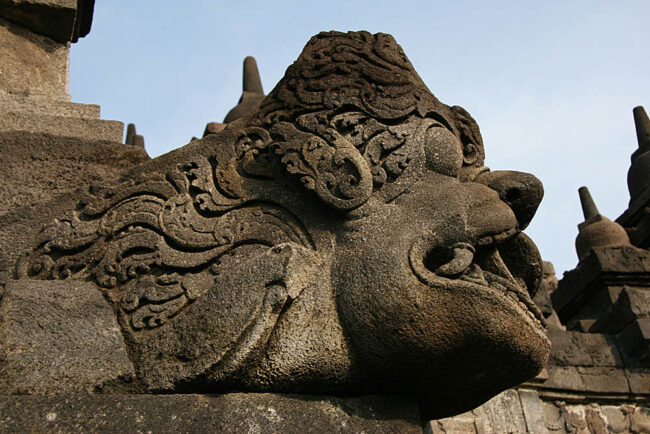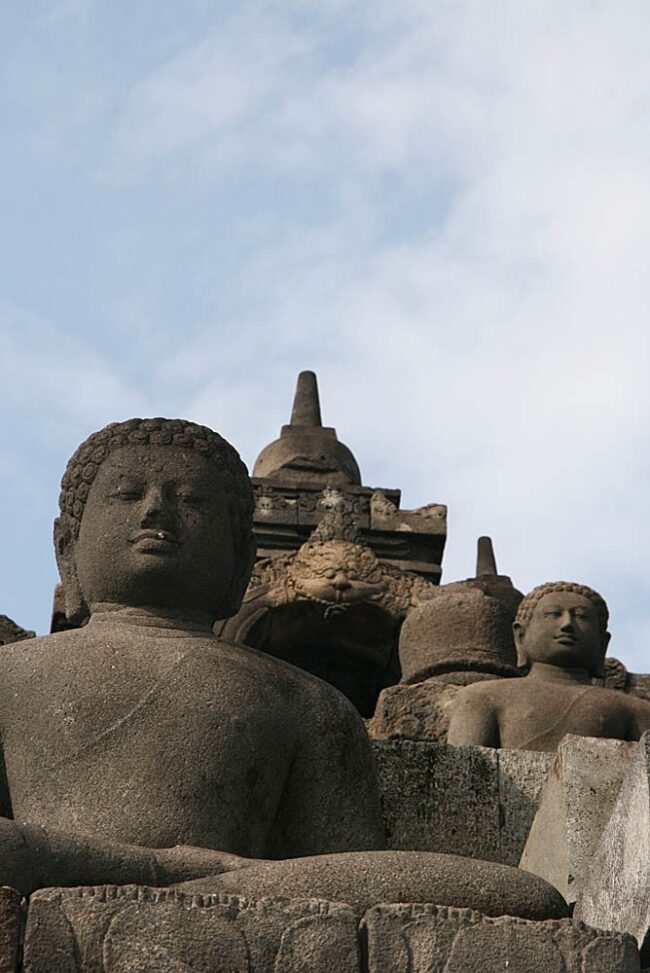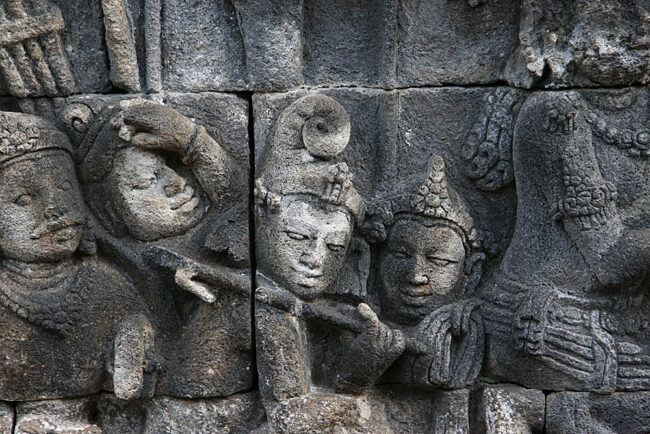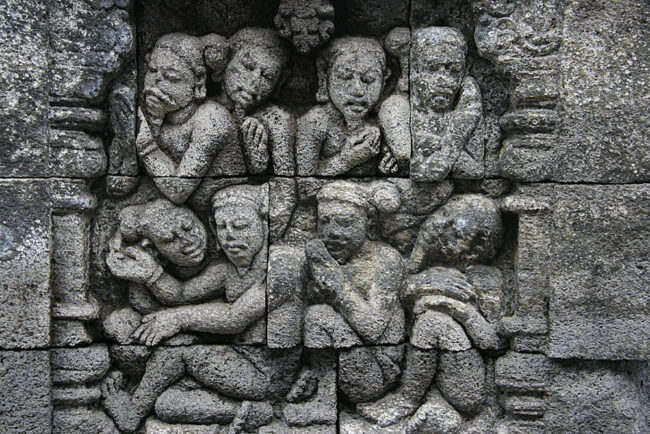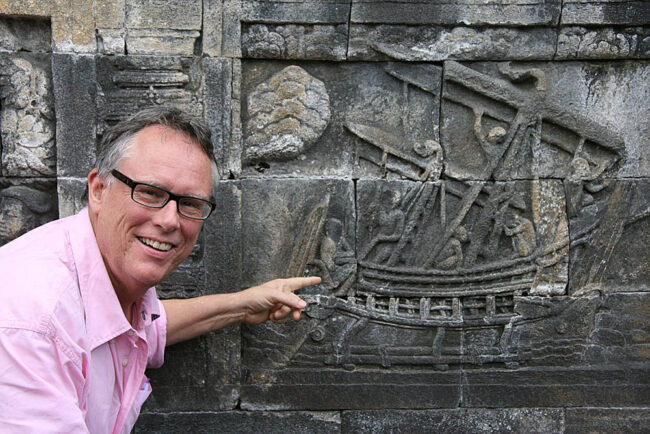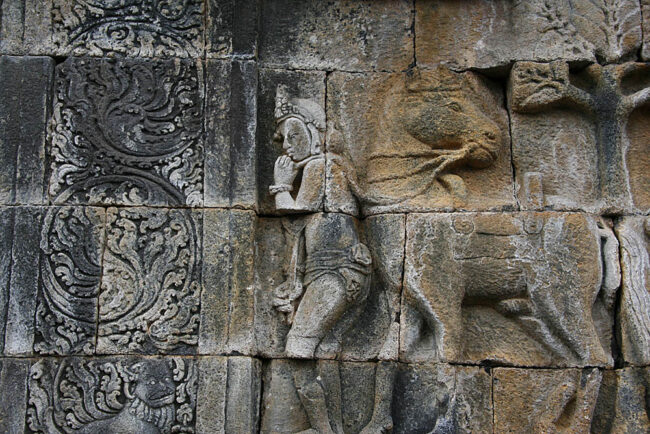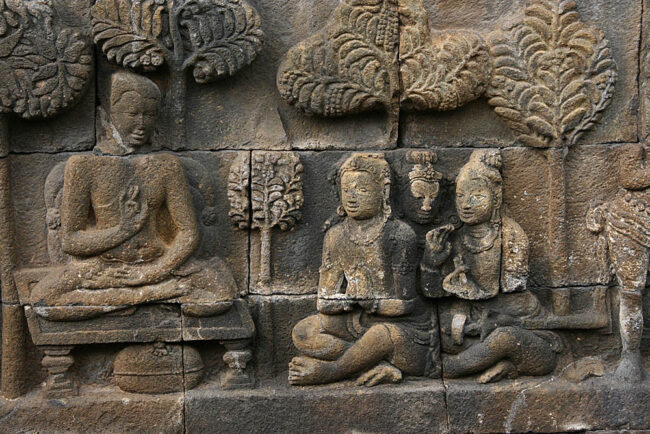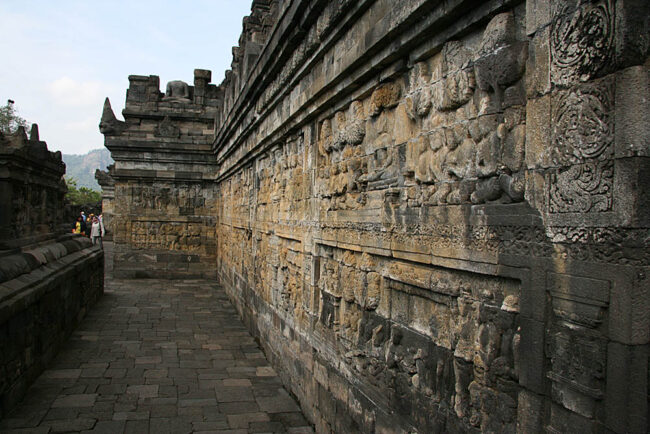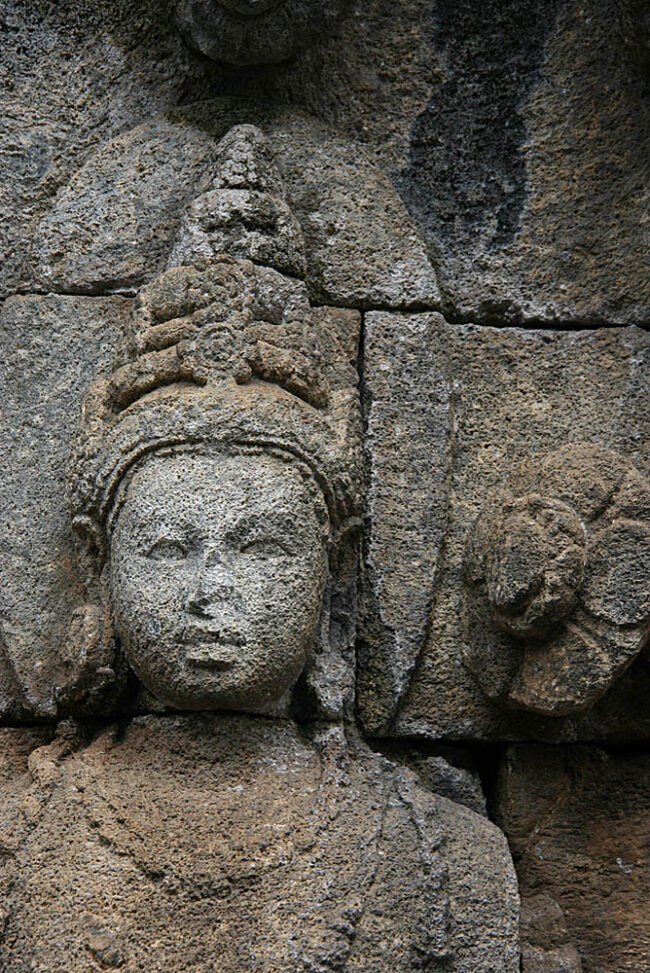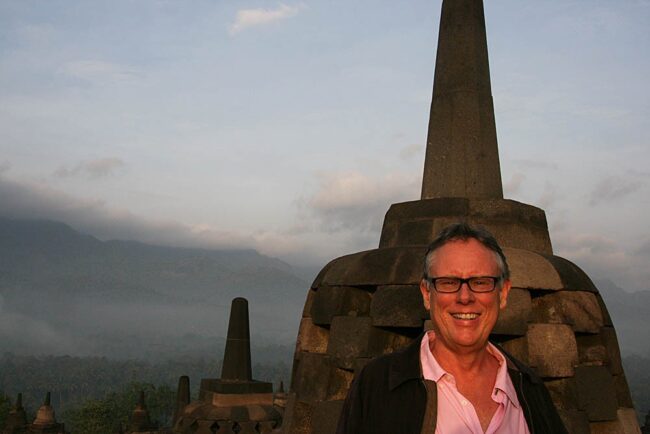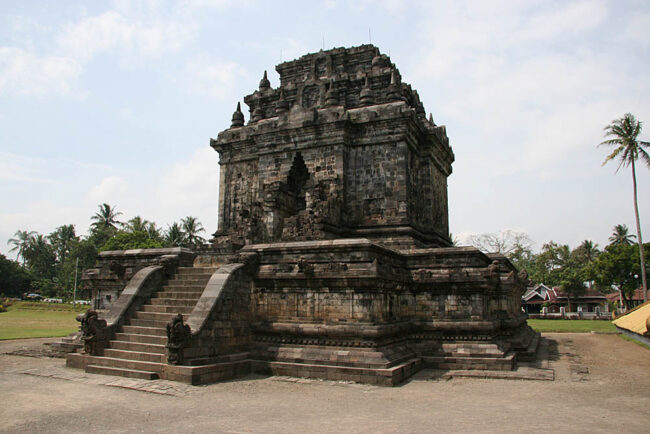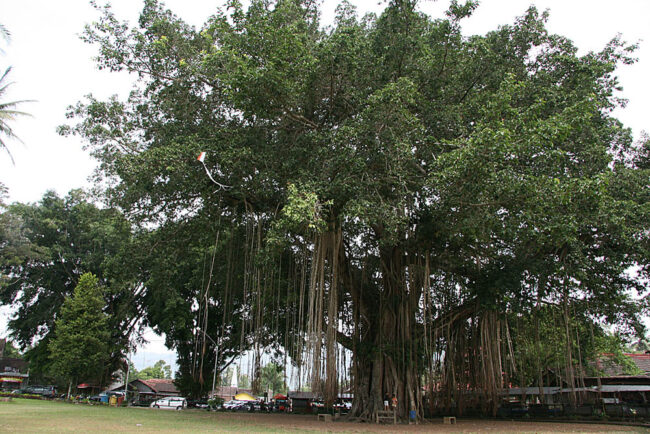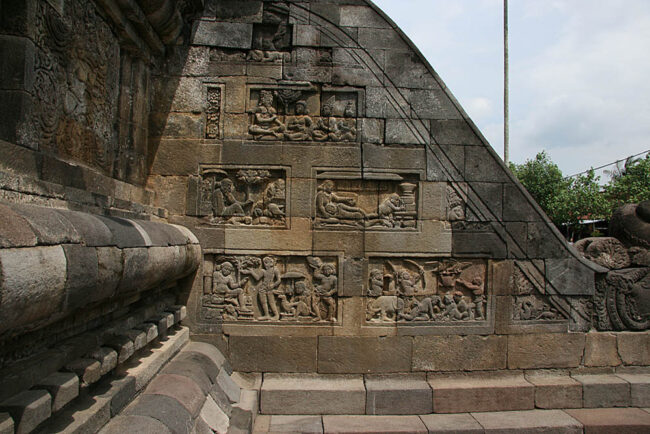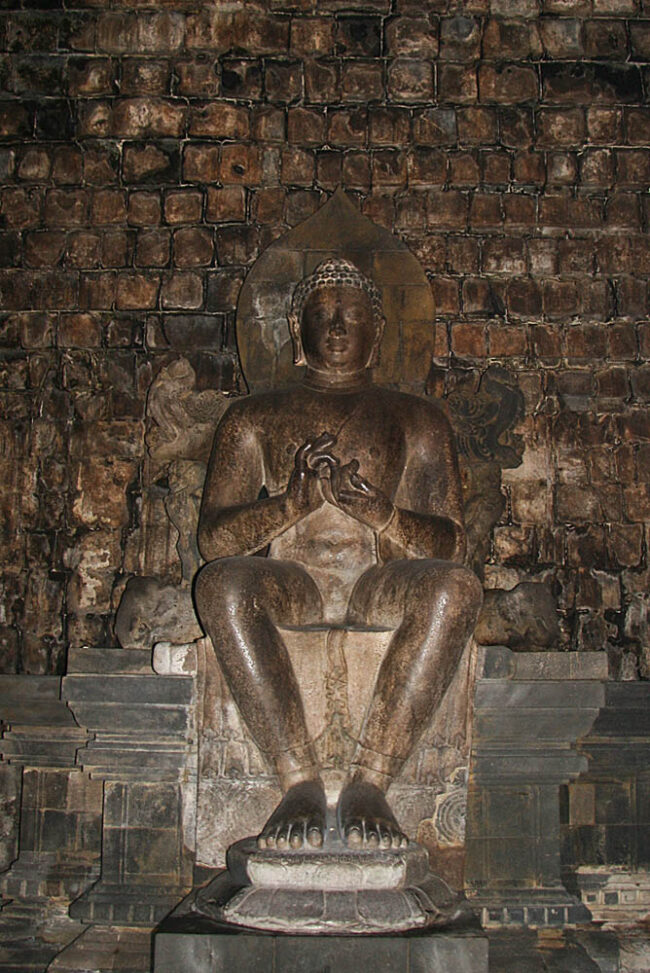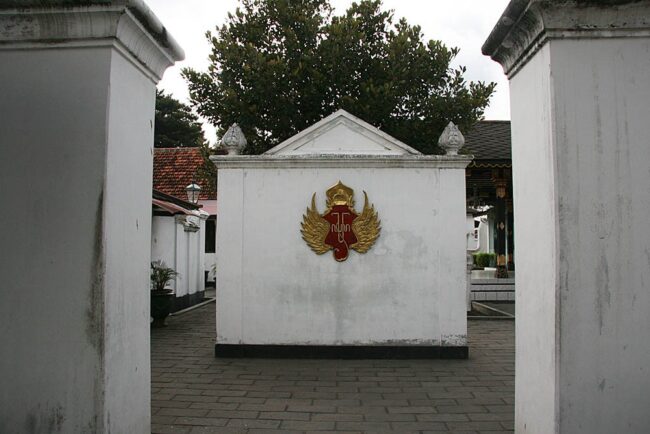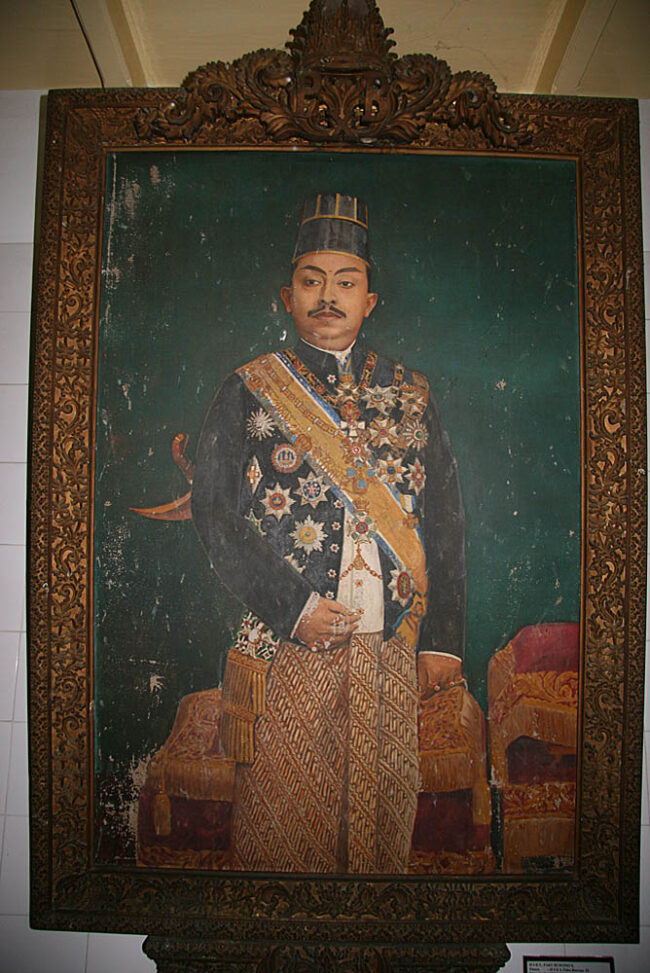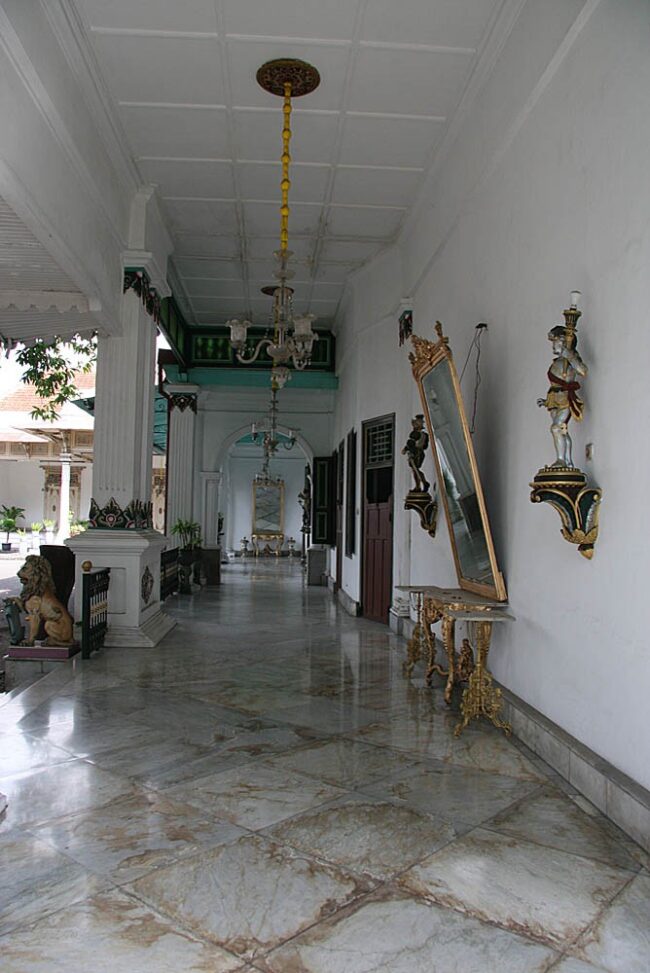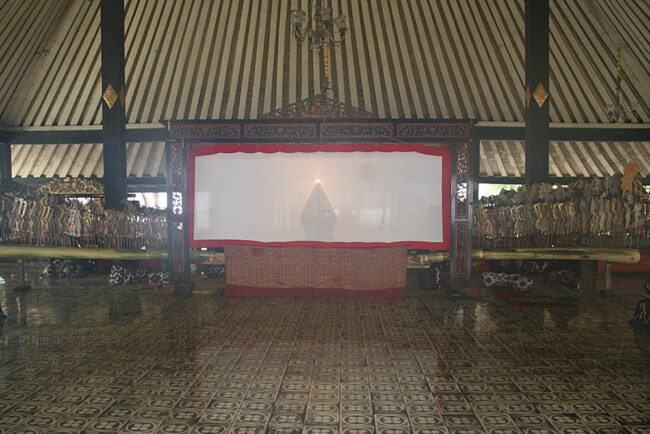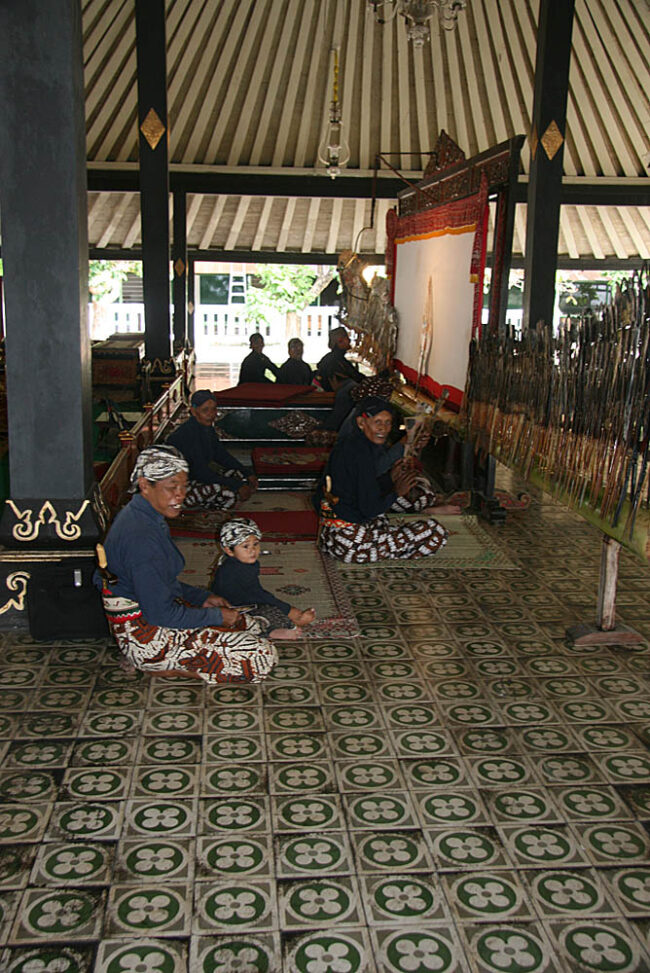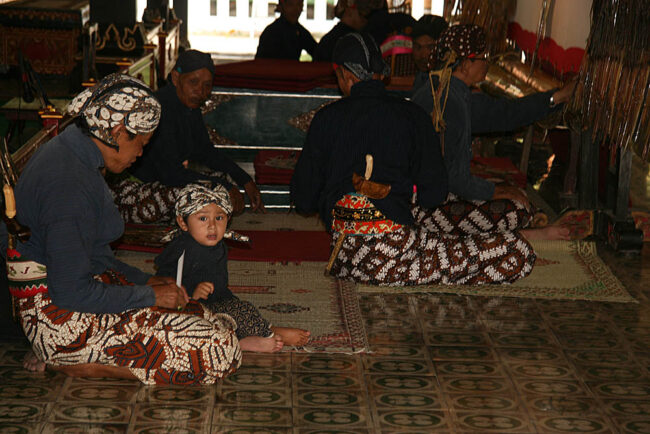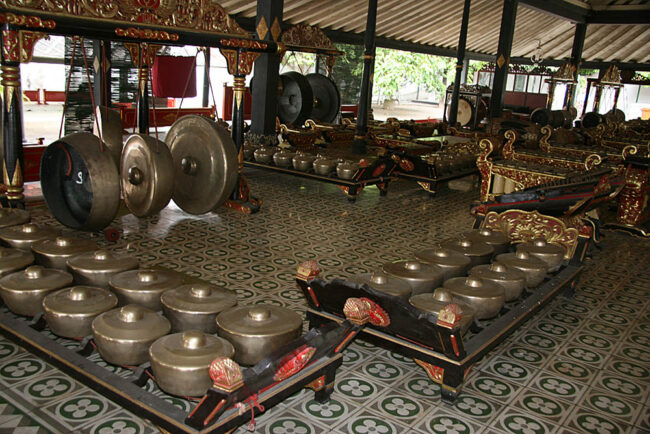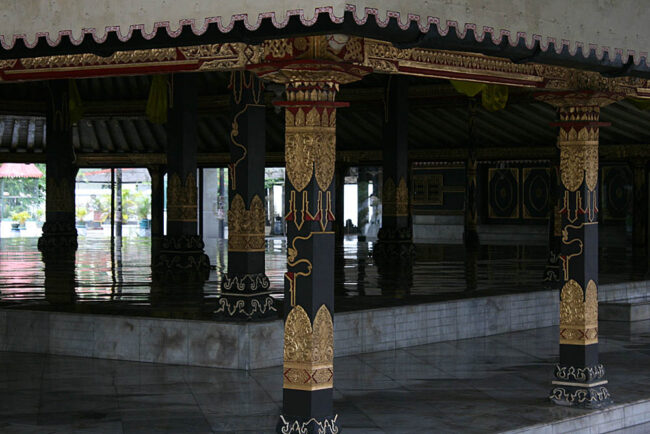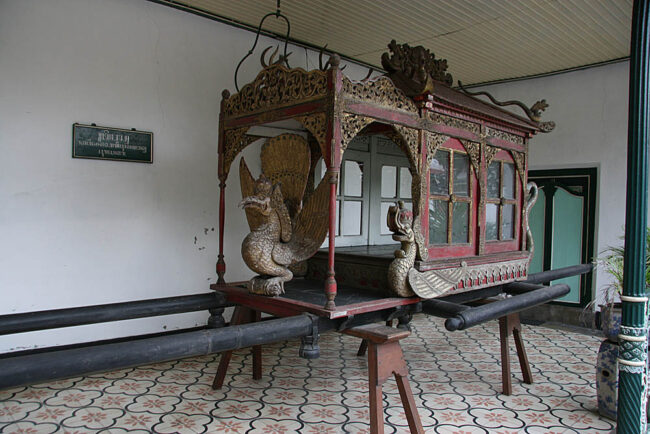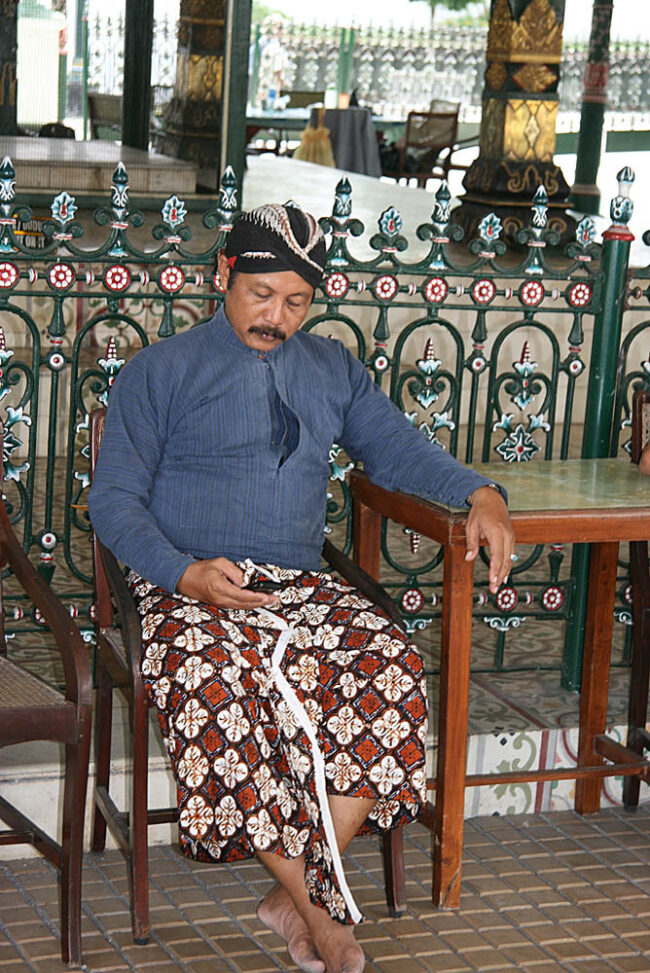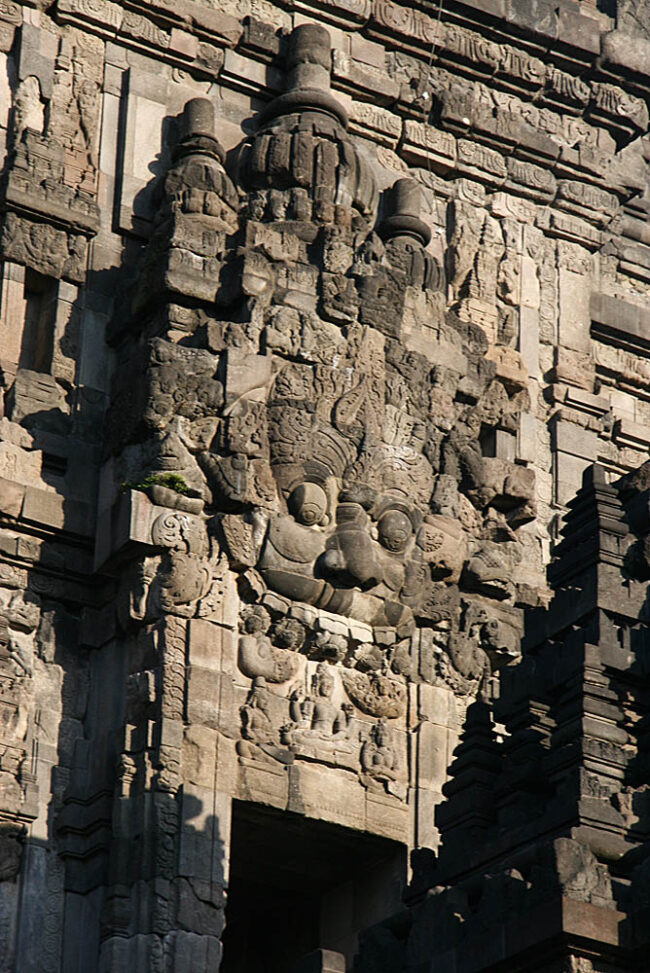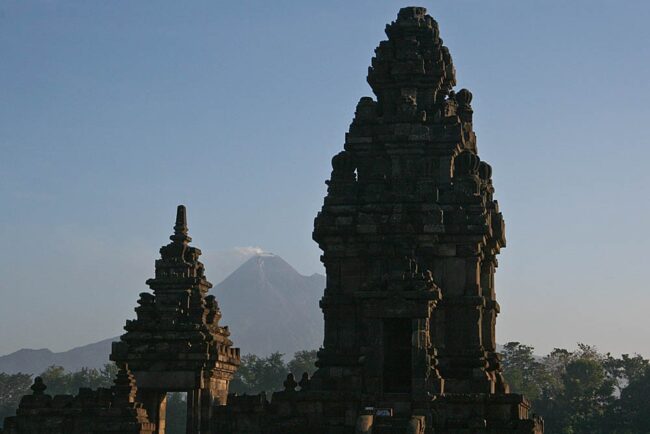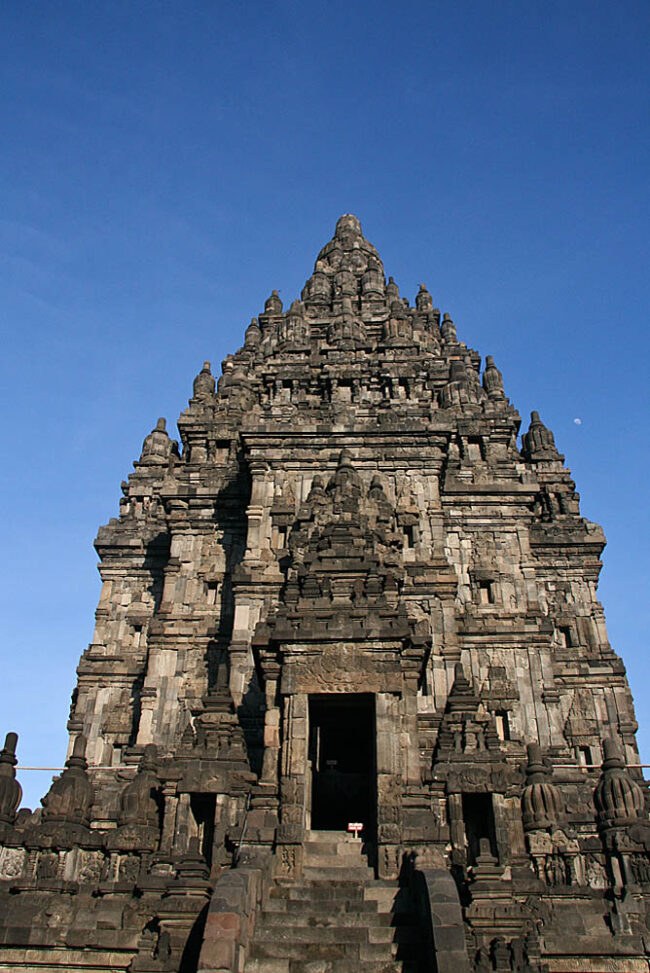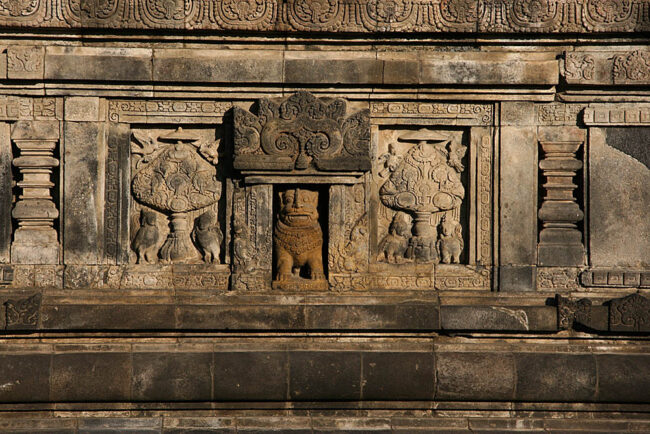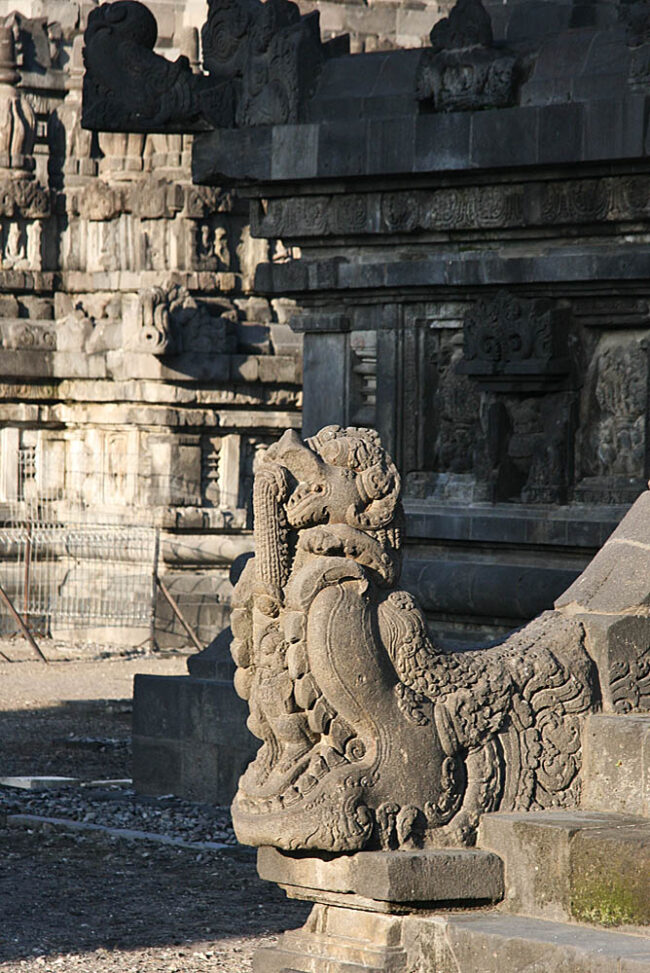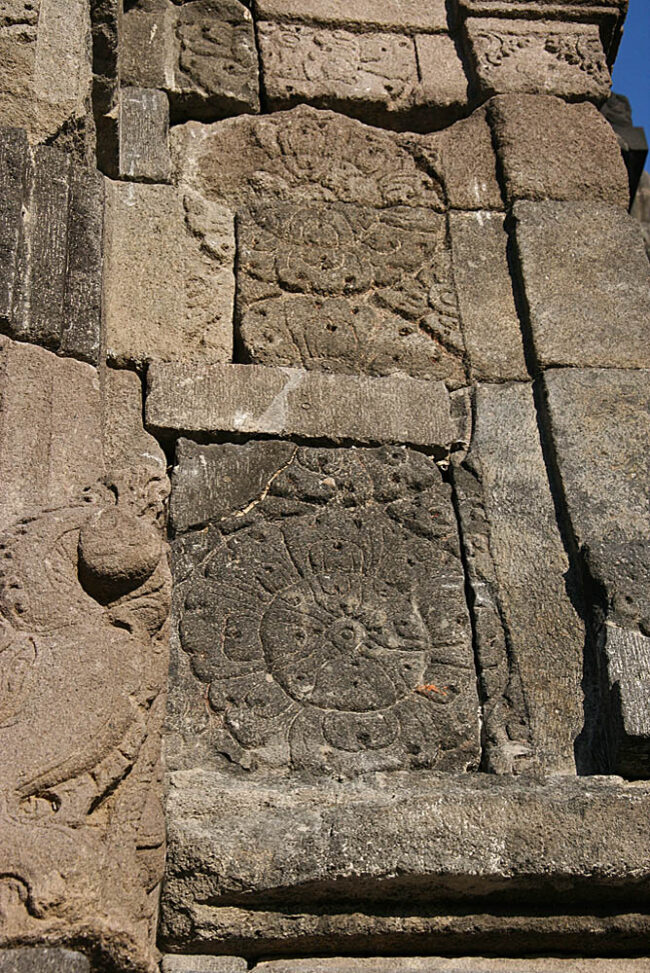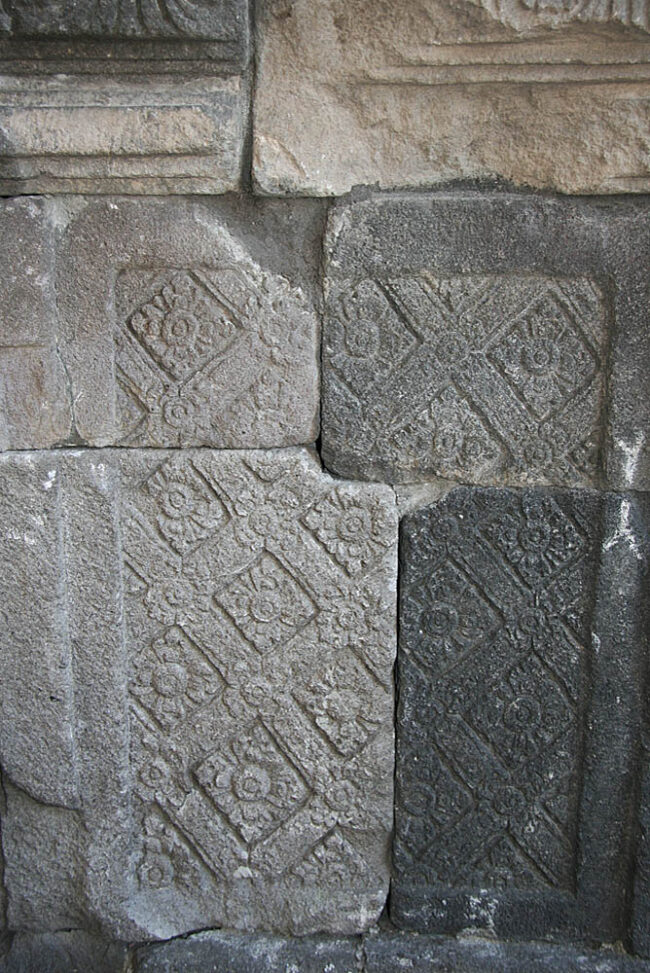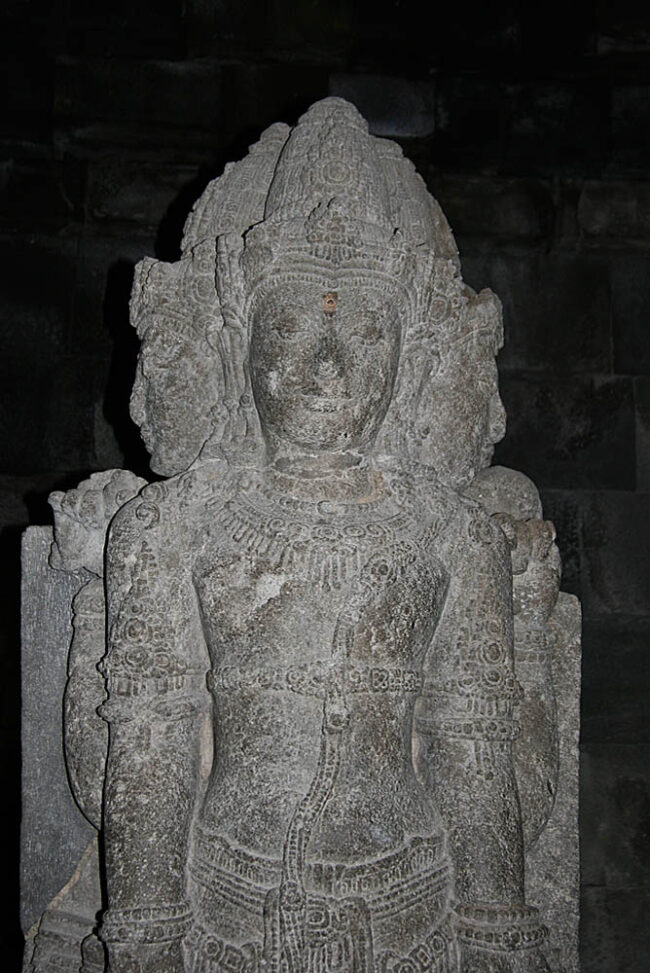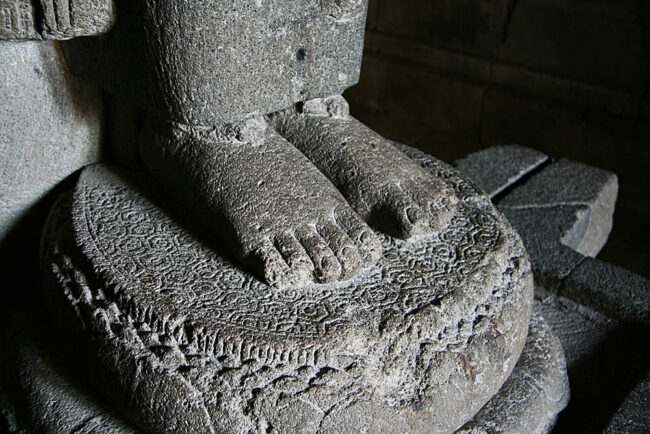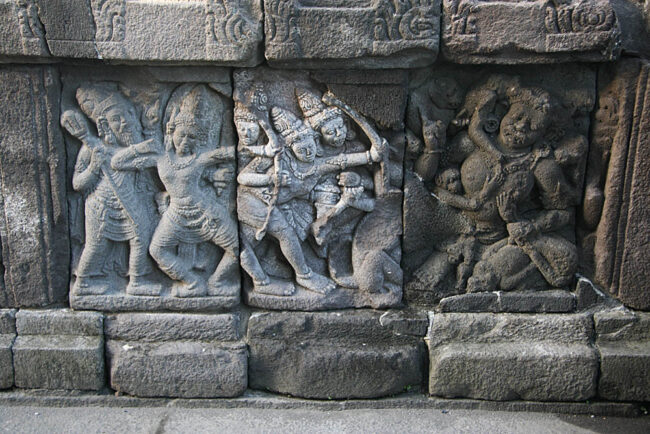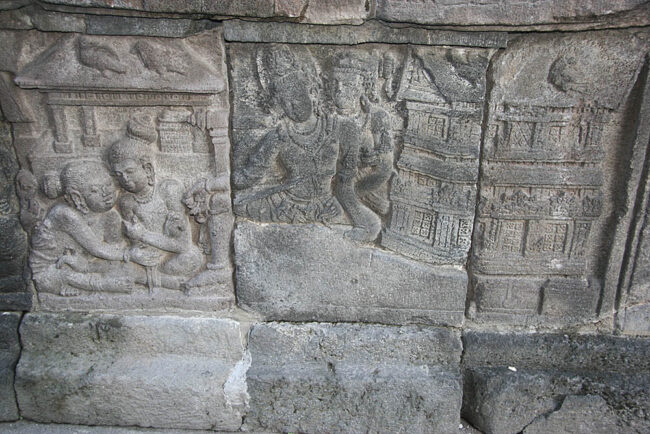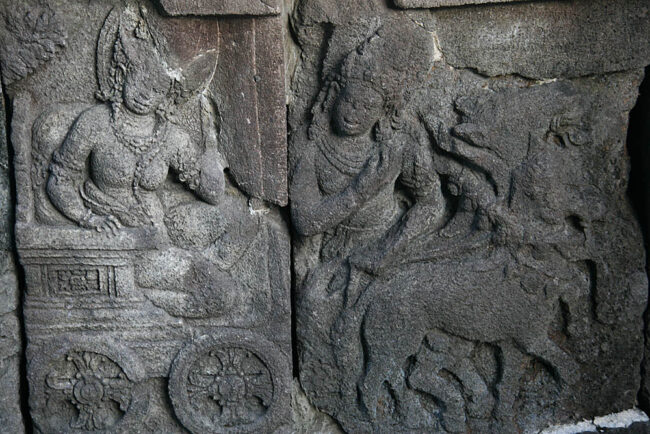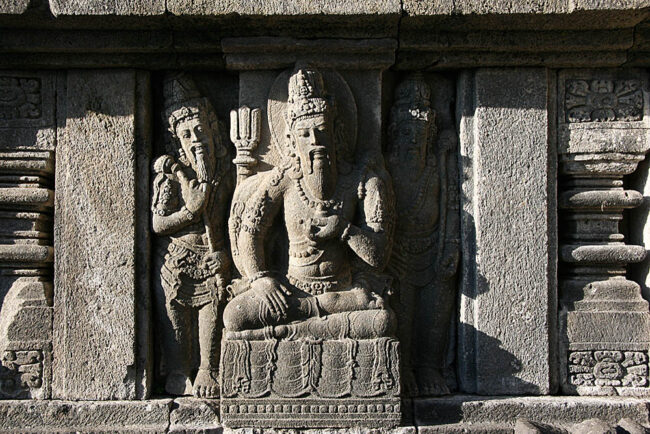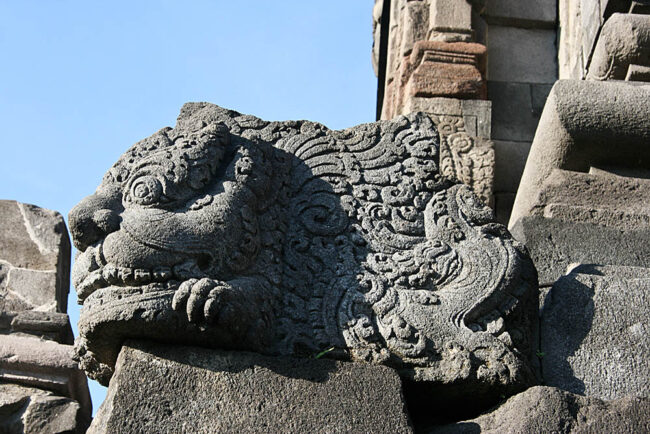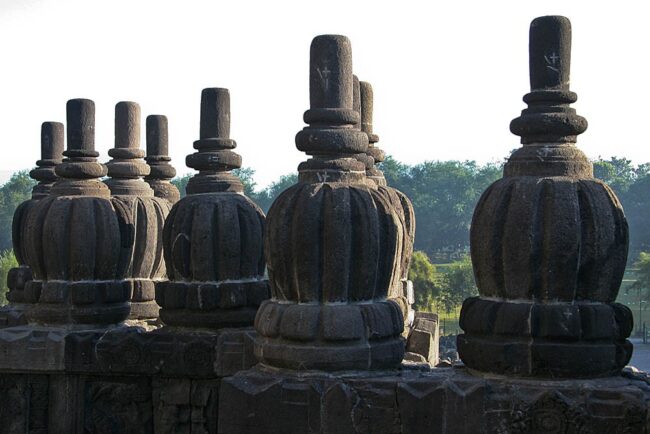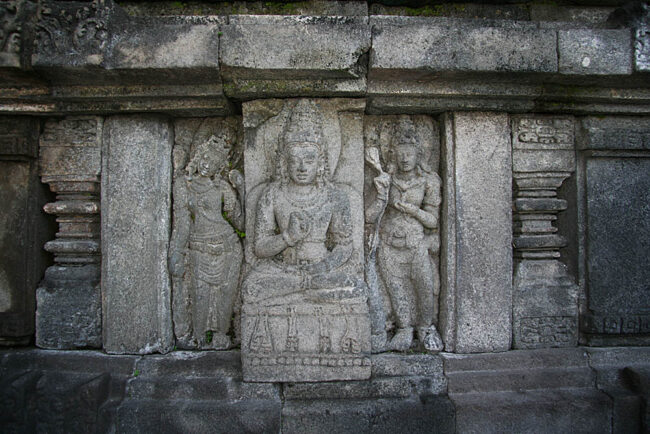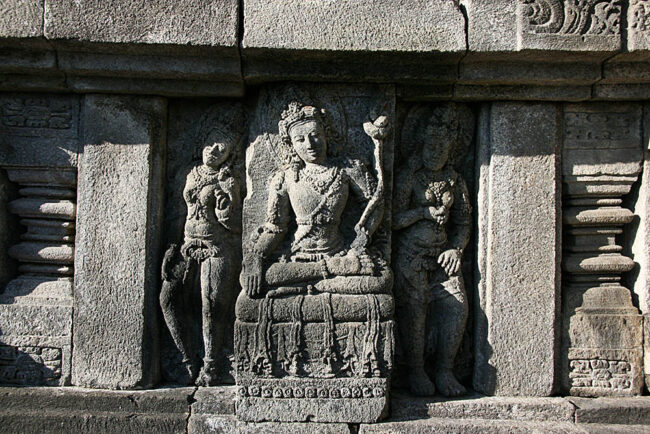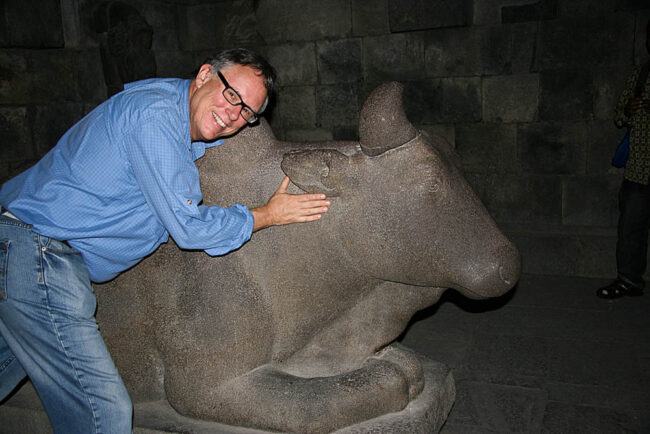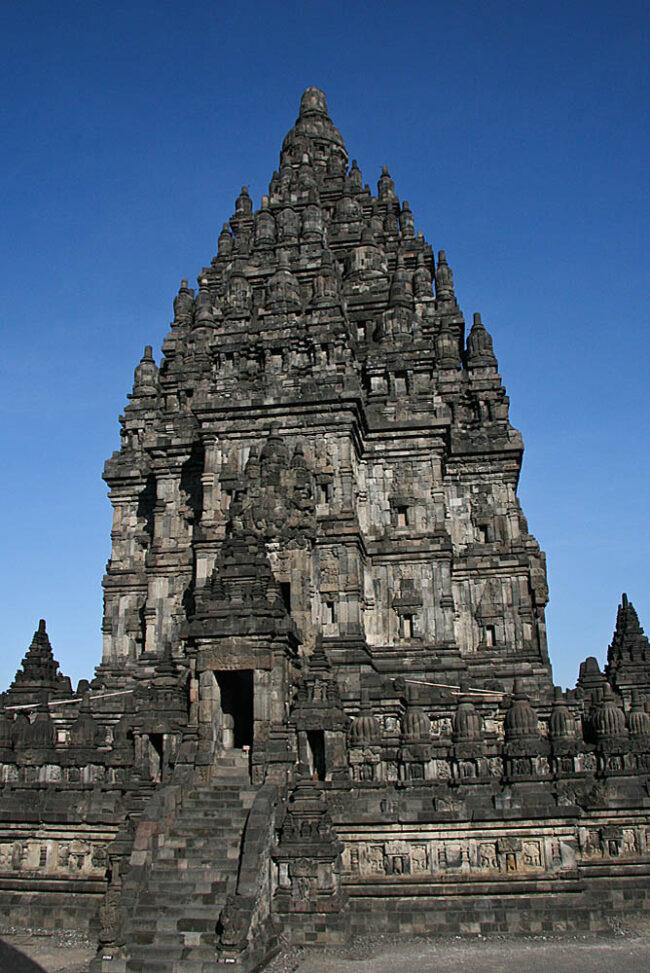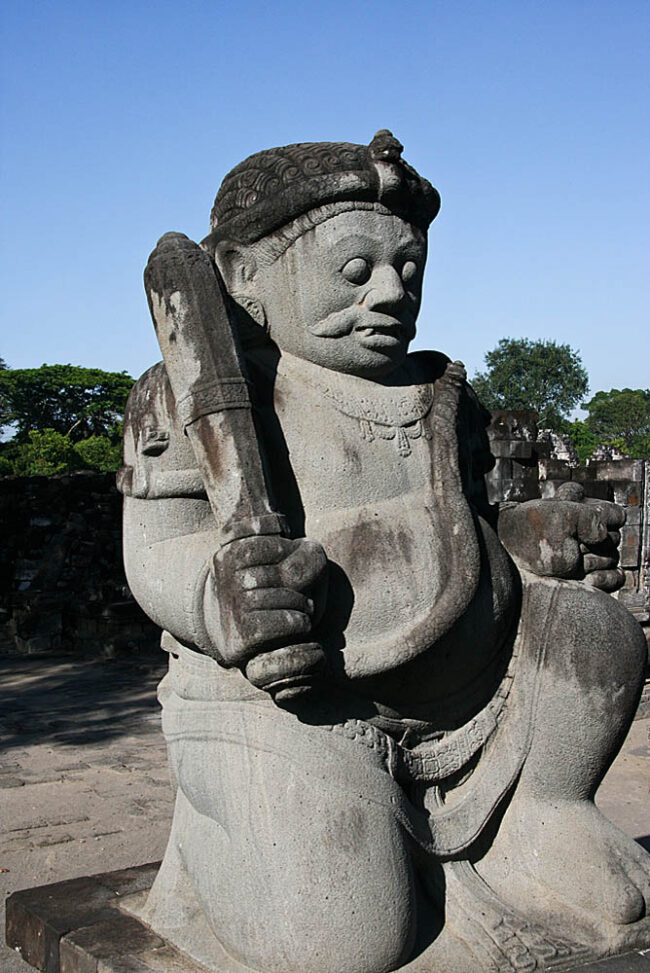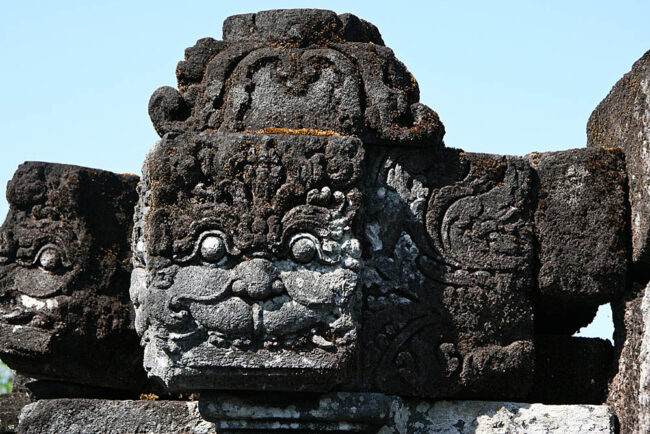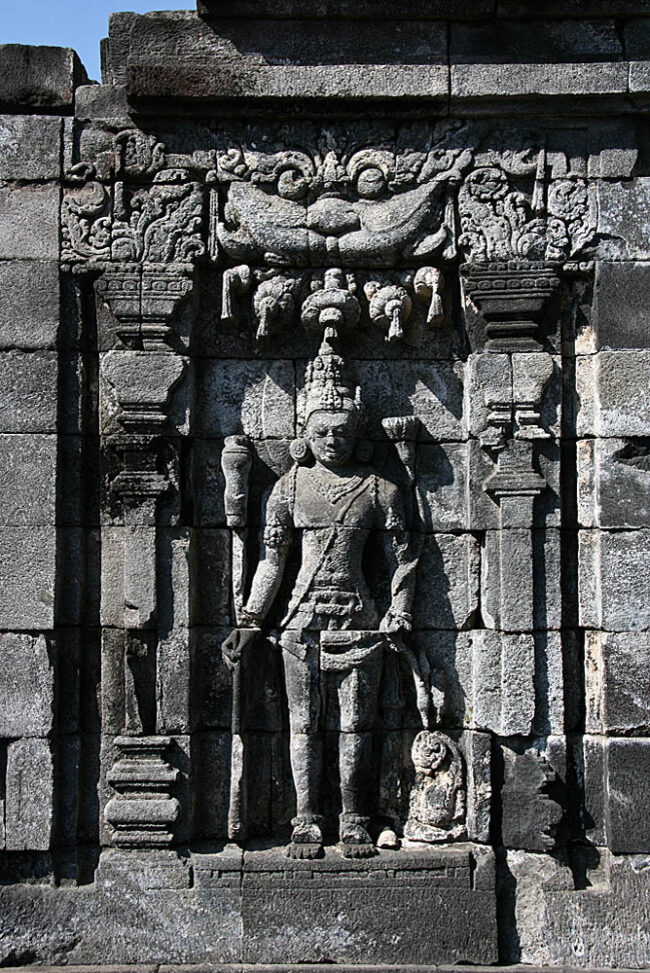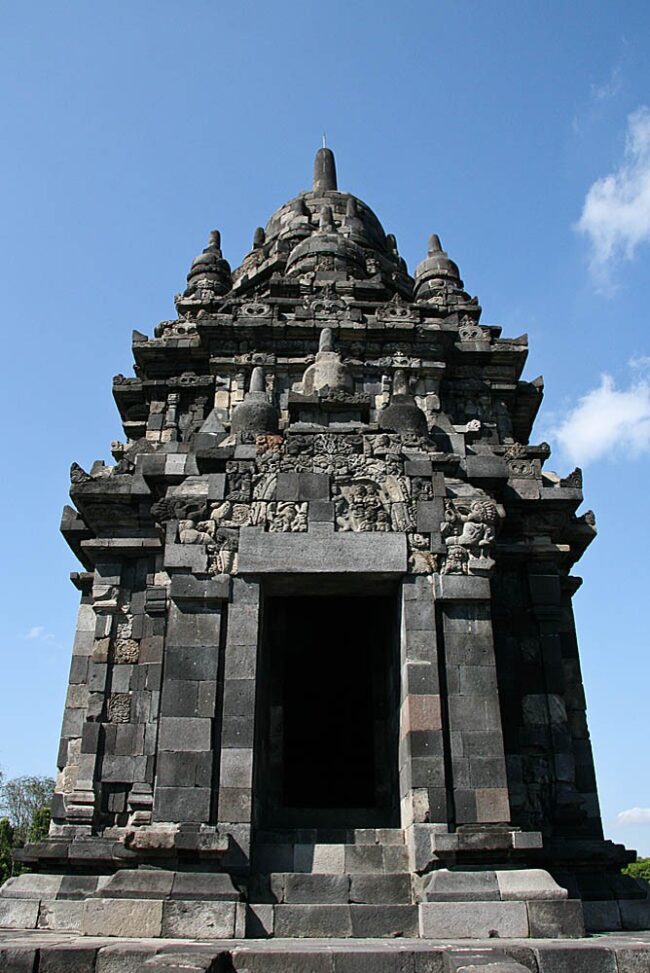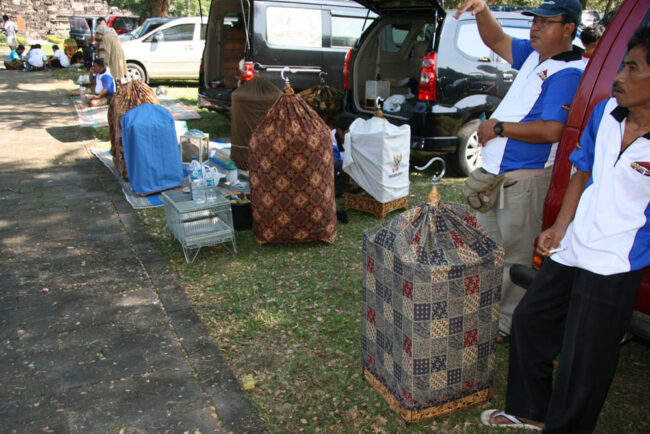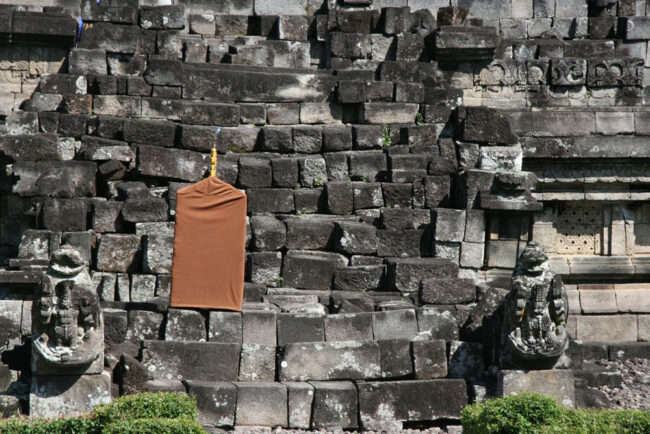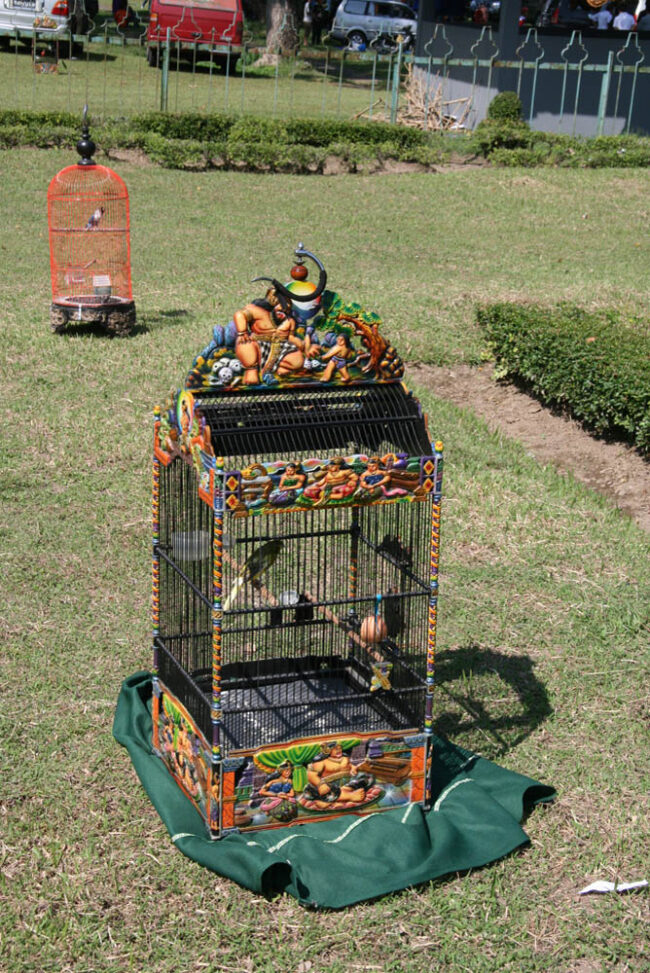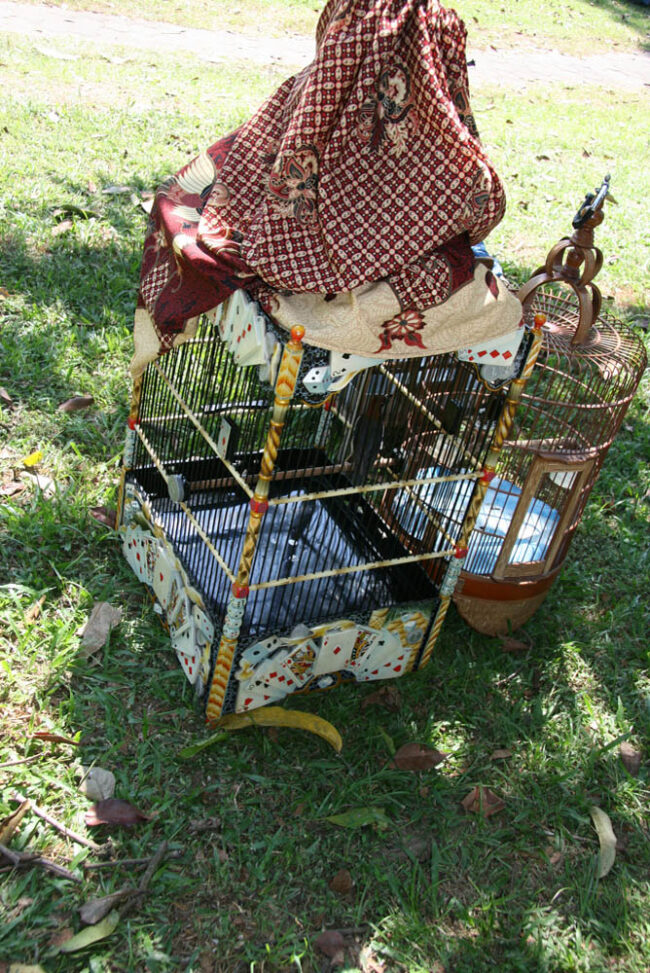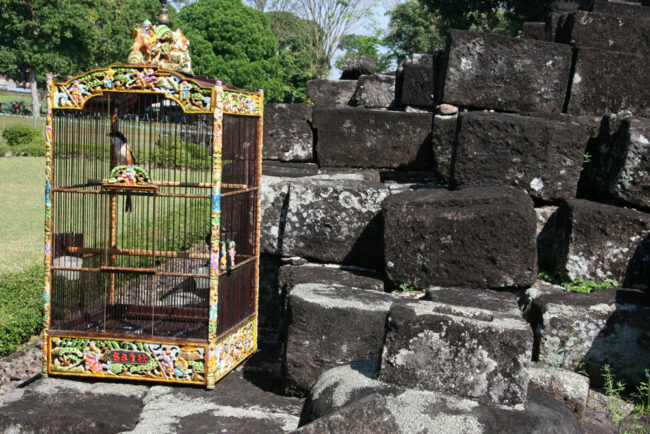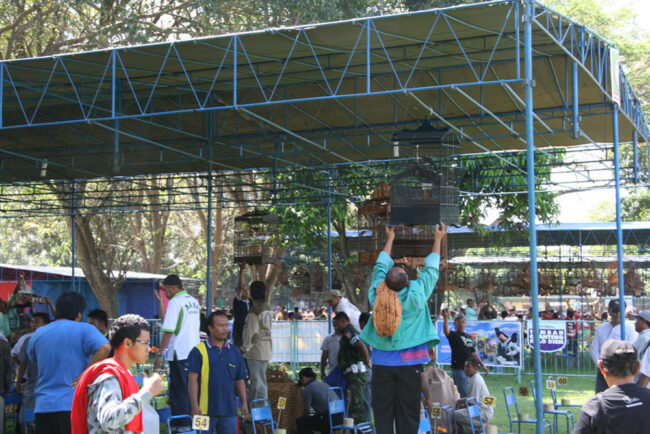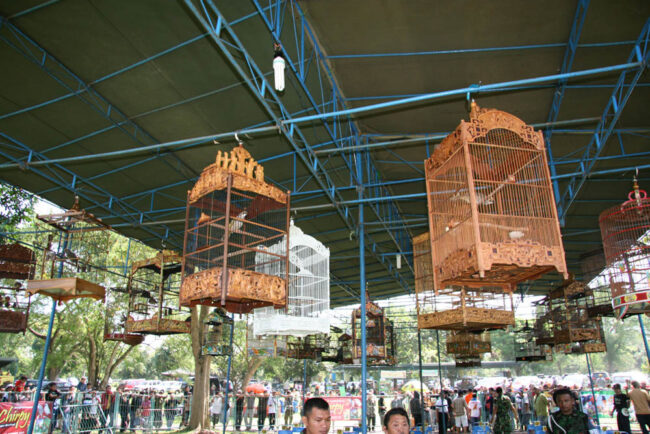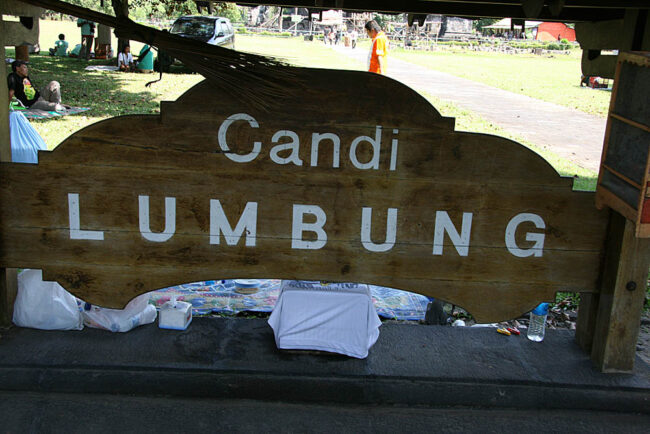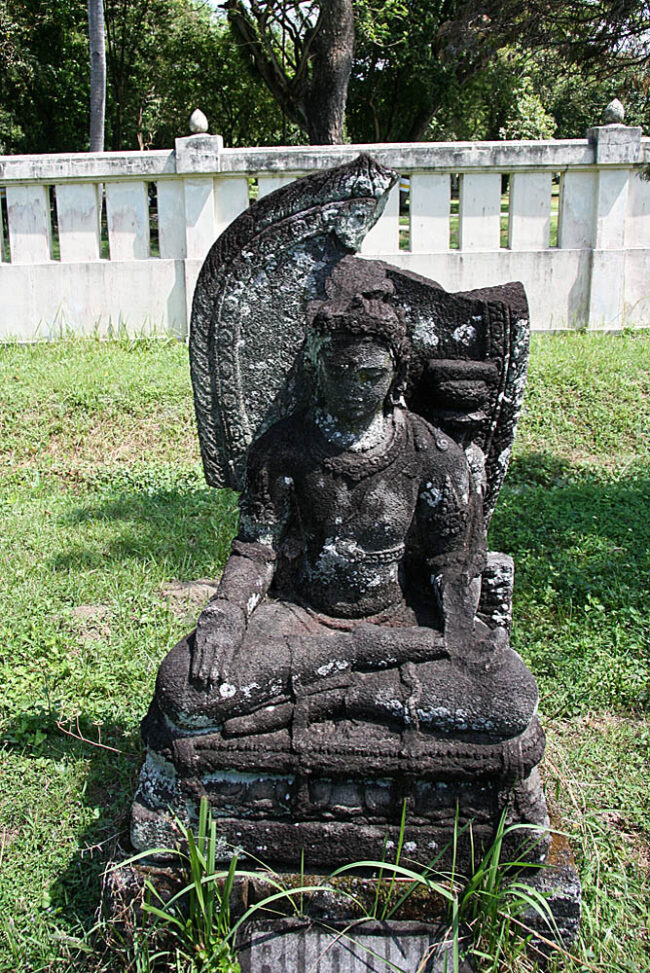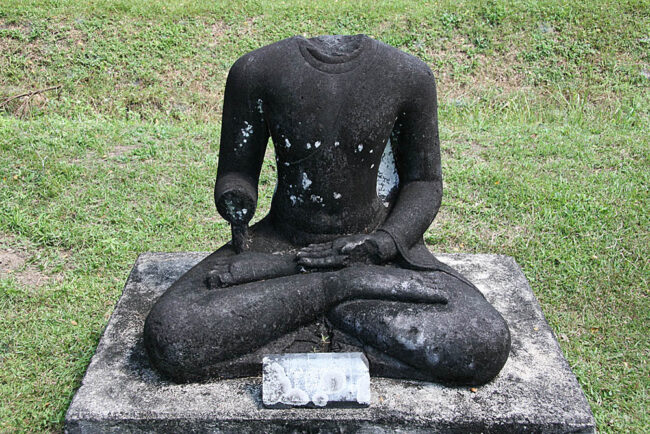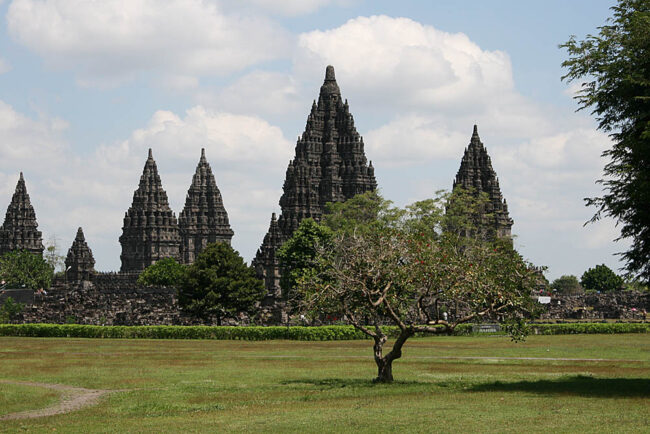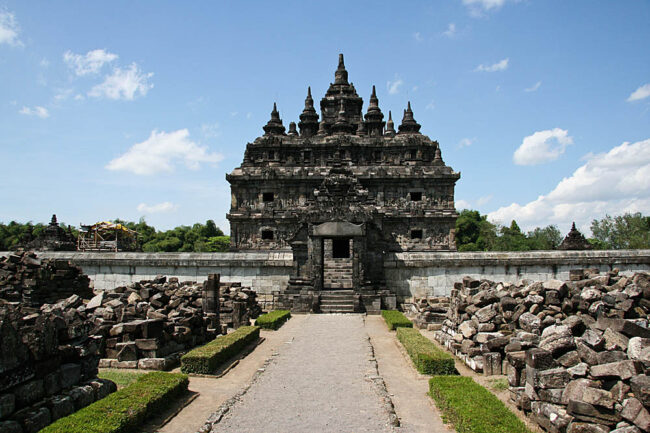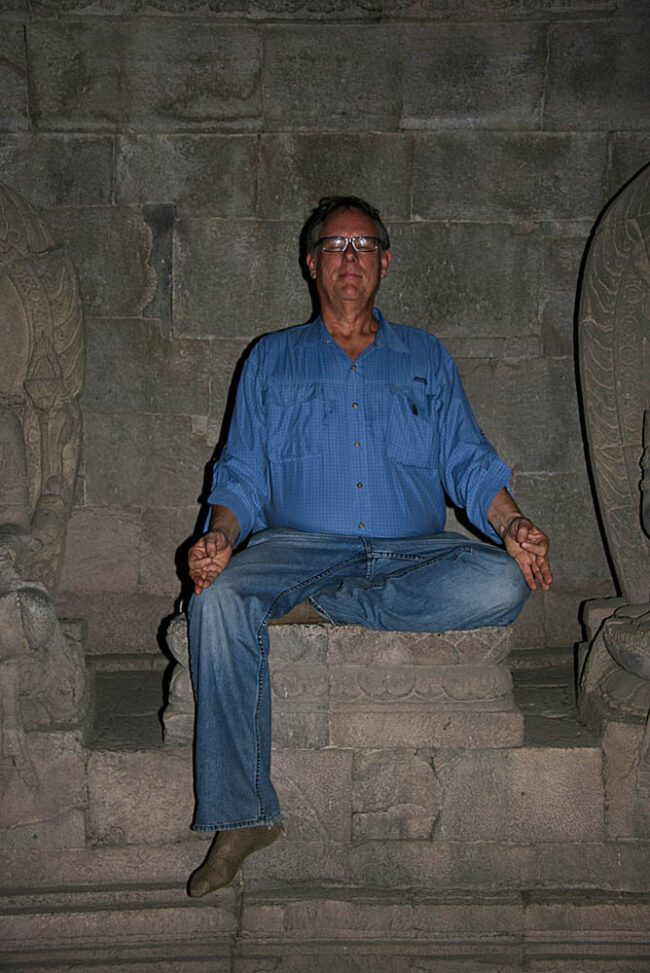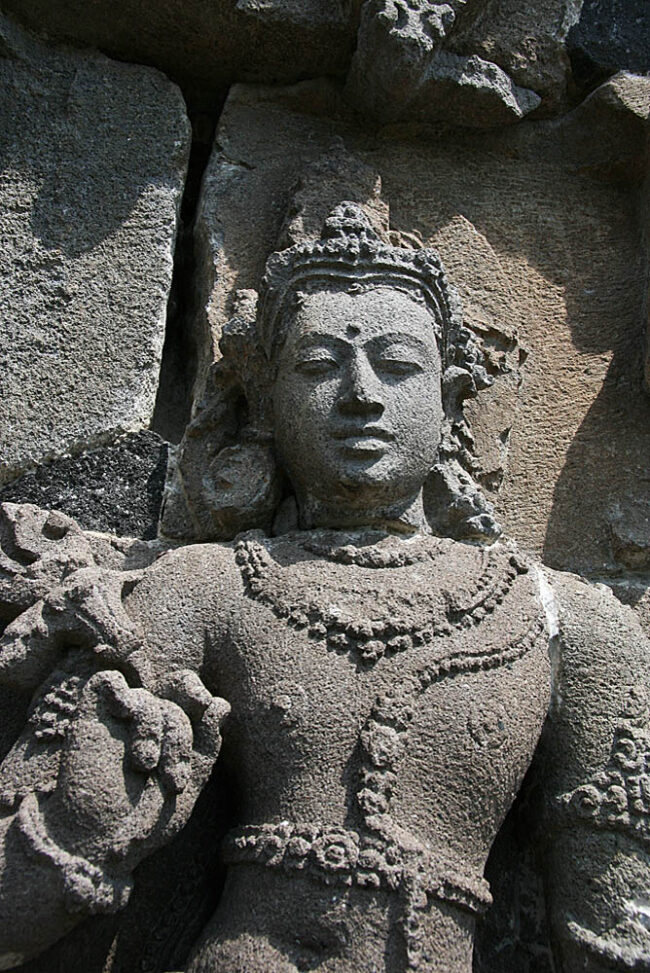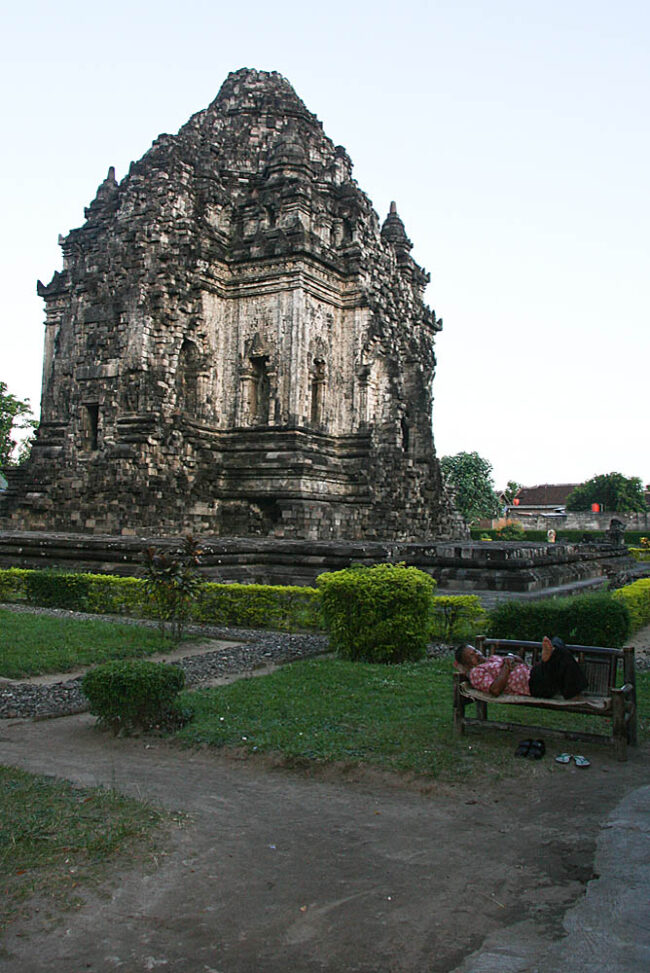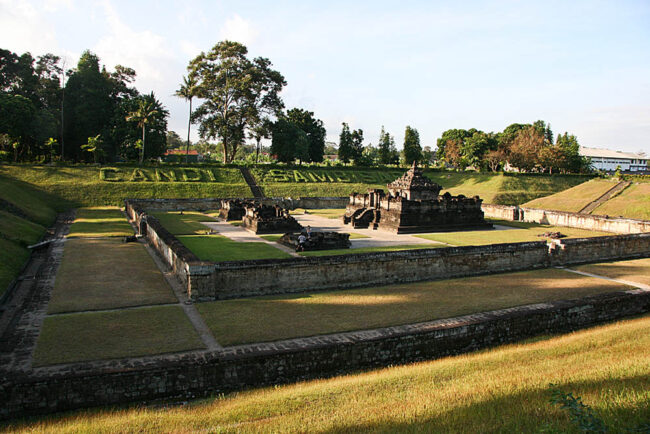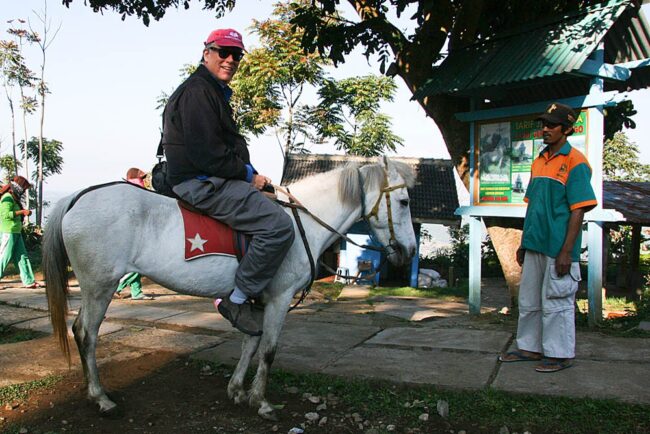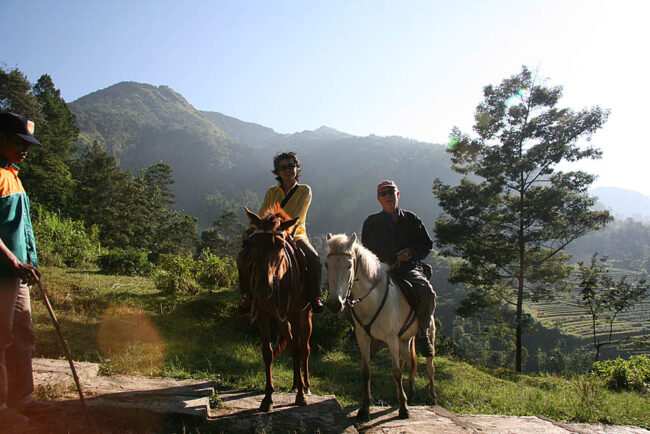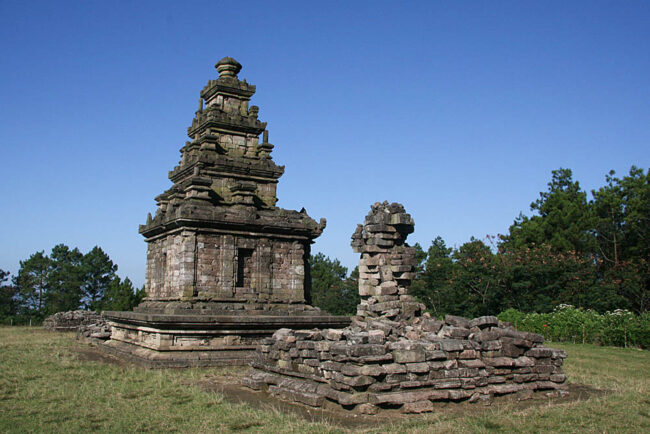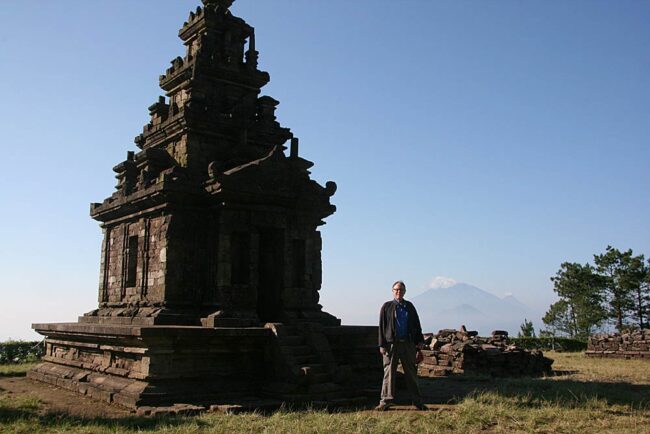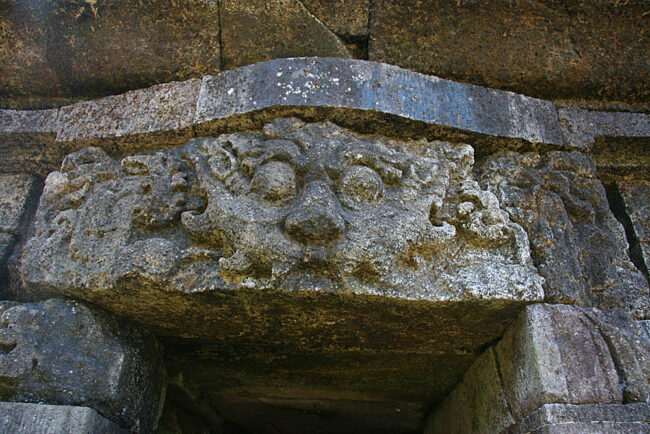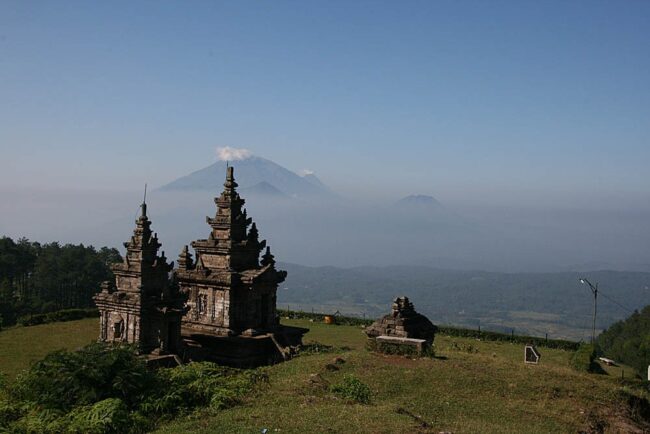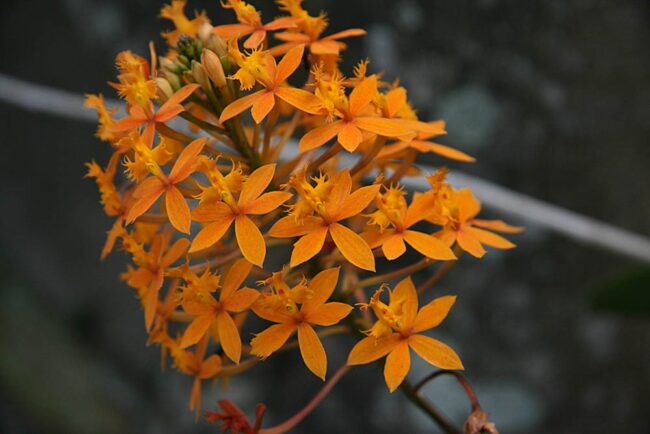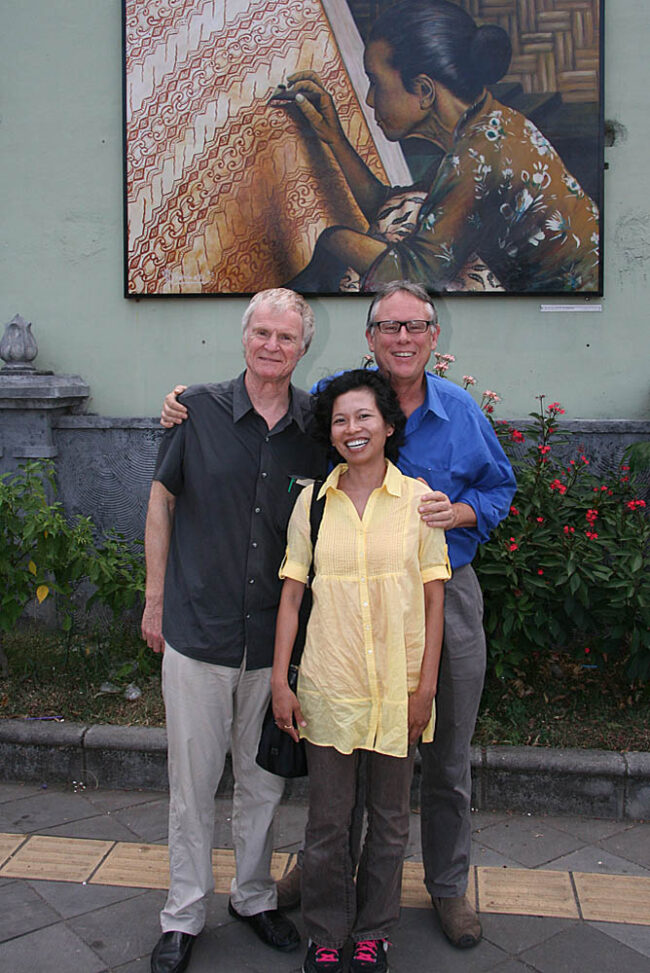Central Java
2010
I have over the last thirty plus years learned to speak passable Bahasa Pasar “market Indonesian” and it has served me well most of the time. But the trip to visit the Asmat in West Papua made me very much aware of the limits of my language skills.
Conversing with people who were known to be cannibals until very recently and who still have a rather ”hungry” look about them (see 2009 Spice Islands Journey for images) makes you want to get every nuance right in your communication. I longed for the subtlety of language in making contact with the Asmat, really wanting to understand the symbolism in their woodcarvings and costumes meant, in their own words. So when six months later the opportunity presented itself for me to take up an intensive Bahasa Indonesia course of study for ten days in Yogyakarta, Central Java, I jumped at the chance. My good friend Sandra Sardjono had received a grant to study classical Javanese and already having been there awhile knew about schools in the area. She introduced me to Alam Bahasa, a school used by diplomats, business people and travelers intending to stay for a longer duration to develop their language abilities. I took a class in the morning and one or two in the afternoon depending on the day. I can highly recommend this school and you should speak with my new friend Swanny, the marketing manager and tell her I sent you!
Following classes, the rest of the day I would go out to catch the sights and sounds of old Jogja, including the kraton (court), The Sonobudoyo Museum, the markets, the Water Palace, Jalan Mailioboro, the Museum Affandi, the Cemeti Art House, home of Joga’s most avant-garde contemporary art scene and had fun trying food stalls and restaurants serving local flavors. On weekends, Sandra had arranged a jeep and driver to take us out on expeditions and for this I am most grateful. We managed to make it to all the important archeological sites of the region, some of which I knew from visits to Central Java in the old days, while others were new to me. I had not been there for 15 years and it was great to see the ruins with a more mature art-historical perspective, not to mention having a native Indonesian who is getting her PhD on the subject as one’s traveling companion to help explain things to me. It could not have been better!
The images you will see in this sequence begin with 9th Century Borobudur, the world’s largest Buddhist monument. Its architecture is in the form of a mandala, with the vertical stepped rise equating with moving into progressively higher spiritual realms. The best time to get there is very early just after dawn as the light is better for photography and there are fewer crowds. It is of interest to note how much the students on holiday, all in Muslim garb, seem to enjoy the monument and take pride in their Buddhist heritage, while the thousand year old Buddhas look on with Mona Lisa smiles of bemusement. On the monument one is quick to notice the repeated bell-shaped architectural elements called stupas, which are a primary motif of Borobudur. This shape has long been the symbol for the non-representational form of the deity recalling the place where the Buddha’s ashes were placed following his cremation; at Borobudur original sculptures of the Buddha may often be found inside the stupas, which is special to experience.
The bas-relief carvings on the sides of the monument describe the nature of the Buddhist cosmos and tell tales of the delights of heaven and the pains of hell. Included among the many narratives are large sailing ships that offer insights into both early boat architecture and the implied scale of maritime trade. (These are of course of particularly great interest to those of us who are so fascinated by ship cloth textiles from Lampung, south Sumatra) Seen as well are stories from the Jataka Tales which tell of Buddha’s earlier incarnations, and heroic tales like Sudhana’s search for the Ultimate Truth. I did feel more enlightened after circumambulating the holy place, so long lost under the ash of a volcanic eruption from nearby Mt Merapi, still a threat today!
Nearby and part of the greater Borobudur complex is perhaps my favorite site, Candi Medut. This is a small jewel of a Buddhist monastery that was built before Borobudur and features three giant (3 meter) seated stone images: that of the Buddha Vairocana, still of exceptional beauty with the equally masterful depictions of Avalokitesvara, and Vajrapani to his sides, each meant to liberate devotees from their body, speech and thought karma respectively. Other Bodhisattvas and their tales may be found in the bas-reliefs surrounding the inner and outer walls of the temple. There is an ancient tree on the grounds that local children play on.
Prambanan, the 9th century Hindu temple complex, was likely created as a political/spiritual answer to Borobudur and Sewu (another important early Buddhist monument on the grounds of Prambanan). Its construction represents a change of patronage for certain and probably a change of dynastic rule from the Buddhist Sailendra family to the Hindu Sanjayas. The deeply spiritual site features temples in honor of Shiva, Brahma and Vishnu, the Hindu Trinity, the Trimurti. There are smaller candis in honor of the mounts for these great Gods, the bull, Nandi, the goose, Hamsa, and the eagle, Garuda.
Prambanan is also known by the mythical name Loro Jonggrang, with the tale of how it became so named being a good one, worth repeating here. In brief, two rival kingdoms are situated next to each other, one ruled by a worthy king and the other by a demon prince. The demon invades and slays the good king in a great battle. While there, he spies the dead king’s daughter, so beautiful in her grief and mourning. He decides he will wed her and she finally relents but only if he can meet two conditions: the first, that he build a well and second, that he build 1000 temples in a night. After he succeeds on the first using his super powers, Loro Jonggrang tricks him into going into the water and she tries to kill him by having an avalanche of stones fall upon him which he narrowly escapes. But so love smitten is the demon that he continues to follow through on the second task. Again, using his supernatural strength he is able to make 999 of them before the sun rises. However, in order to avoid marrying him, she tricks him yet again into believing he had completed all 1000 with first light. When he realizes she had succeeded keeping him from fulfilling his pre-marital duty to her, to get the job done, he became very angry and turned her into the last temple. And thus did Loro Jonggrang the princess become Prambanan Loro Jonggrang. Other temples on the site include Candis Lumbung, Bubrah, Sewu, Morangan, Plosan, and others beyond.
As we walked around the Prambanan grounds, we had the extraordinary experience of witnessing the most important gathering of song bird lovers from all over Indonesia. They came at the invitation of the local sultan for a competition of whose bird could make the most beautiful song. A thousand birds were in exotic bird cages tweeting away in the old and best sense of the word “to tweet.” All this taking place on the grounds of this holy site…very cool…
Our last adventure took us to Candi Gedong Songo (literally, House Nine, referring to the number of temple sites spread over the site) probably the most remote temple site of Central Java. It is so high up into the mountains, and came with such a steep incline, we had to use horses to climb. But this was a most memorable day because not only did we view a progression of temples on this ancient royal site beautifully situated on a very nice day weather-wise, on the way down we were able to drive between the mountains to get to Solo, the “splinter kingdom” of the ancient Mataram dynasty to meet with our good friend Rudolf Smend, the great batik expert from Germany for a walk through the Museum Batik Danar, almost certainly the world’s greatest collection. It includes a great restaurant right there on the spot, because studying the batik carefully, one can get very hungry!
Following that, they took me directly to the airport and set me off to Bali for a lovely three day stop before moving on to see Robyn Maxwell’s magnum opus, Life, Death and Magic at the National Gallery of Australia, the finest Bronze Age and Tribal Art themed combination show that any of us will ever see!


